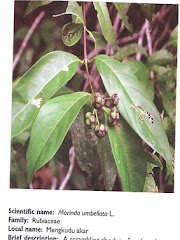The emphasis on – indeed, obsession with – the extraction of timber from forests is fairly recent. Previously forests were considered valuable for their “minor” products such as resins, incenses, fibers, and the like. The situation of late has been reversed. In Southeast Asia, for example, timber now represents as much as 95% of foreign trade. This shift has occurred because of several factors: (i) governmental desire to maximize revenues, which favors exploitation of timber resources, with the potential for large profits; (ii) dissatisfaction with the modest revenues available from minor product extraction; (iii) the desire to attract large-scale investment capital; and (iv) the desire to extend governmental control over remote areas. All these have contributed to the rise of the global timber trade.
Tropical countries produce about 35% of the world production of “roundwood” (total wood removals), which amounted to about 3.4 billion m3 (cubic meters) in 1988, and about one-fifth of the world’s wood products (Amelung, Torsten and Diehl, 1992). Most international tropical hardwood now comes from Southeast Asia – Malaysia, Indonesia and The Philippines – although the industry has shifted from The Philippines to Indonesian and Malaysian Borneo (Kalimantan, Sabah and Sarawak) as the forests in The Philippines are now seriously depleted. Southeast Asia has become dominant in this trade because its forests are very rich in commercial timber species and contain a large proportion of light hardwood trees, which are most in demand in the international market. In 1988, Malaysia provided 62% of legal timber product exports, worth $1.5 billion, most of which went to Japan; while Indonesia provided 22% (Dobson, 1995). At current rates of cutting, commercially-valuable trees will be gone from Malaysian and Indonesian Borneo early in this century. As these forests are becoming depleted of hardwoods, many of the Southeast Asian timber companies have headed for South America. South American logging mainly supplies internal demands, although there is a substantial export business in hardwoods, especially mahogany. Africa also produces much wood for export, although the percentage of foreign exchange earned by timber products is much lower than in Southeast Asia. In Cameroon and Liberia, 12% of exports consist of timber and wood products (Dobson, 1995). Forty-five percent of the global demand for tropical timber comes from Japan, for which wood is the second most valuable import; Japan is followed by Korea and Taiwan (Amelung, Torsten and Diehl, 1992). Tropical wood is made into plywood, veneer, and forms for concrete for construction purposes. The plywood and veneer are exported as finished products and are important in the Japanese economy. The wood construction forms for concrete are used once or a few times and then discarded. The United States is the second largest importer of tropical hardwoods, with demand continuing to grow. Tropical woods are still only a small part of the US market for wood, however, and are used for paper pulp and chip wood, as well as for furniture and construction. Although the US could be self-sufficient in hardwood production, tropical hardwoods are cheap (and of course the destruction cannot be seen).
Those obtaining timber concessions in tropical countries are almost uniformly politically connected or are contributors to political campaigns or to the politicians themselves. The concessionaires are frequently politicians themselves, desiring large profits. For example, in Indonesia, most of the timber concessionaires are government officials or retired military men. One can readily see that monitoring logging operations or investigating violations is almost impossible under these conditions.
The timber industry generally pays relatively little for the concessions to log forests. Usually the companies pay low taxes, or obtain tax “holidays” from the government. These favors are considered by governments as an inducement to business, but in fact they are often payoffs for friends, relatives or other powerful interests. The terms of the concessions, at best, do nothing to encourage logging companies to log sustainably or non-destructively.
Generally, a particular area should not be logged more often than 25-40 years, but timber concessions are usually granted for less than 20 years; thus, there is no incentive to the timber companies to cut selectively. They take what can be sold, as rapidly as possible, without caring whether or not the forest will be able to maintain its productivity. Additionally, the fees imposed on logging are usually based only on volume, not on timber value or type. Not surprisingly, logging companies engage in “high-grading” – extracting trees of the highest value over large areas, in the process damaging less-valuable trees at will. This results in the loss of or severe damage to as much as 75% of the uncut trees (not to mention other vegetation) (Repetto, 1990). Timber companies also often obtain concessions which are larger than they can manage, often absurdly large. In the Ivory Coast, timber companies, within seven years, obtained concessions for two-thirds of the country’s production forests. In 1990, in Thailand, Indonesia and the Philippines, logging concessions granted covered more than the total area under forest (Repetto, 1990). Few concessionaires log their holdings; they resell the logging rights to other companies, thereby acting as middlemen. This can be highly lucrative.
Logging activities begin with the construction of roads to gain access to the timber. This itself consumes huge areas of forest – as much as 15% of the logging area may be cleared for roads. The intrusion of roads into forests can be devastating, as has been discussed elsewhere in this document. Roads open up forest interiors to pests and diseases, increase erosion and waterway sedimentation, and, most destructively, begin the chain reaction of incursions by farmers, ranchers, hunters, miners and land speculators.
Recently, many countries have developed wood-processing industries, and seek to export sawn wood, rather than raw logs. This is intended to provide employment opportunities and to add value to forest products. However, many developed countries have high tariffs on processed wood, and thus many of these industries are not economically sound. The government must prop them up by banning the export of raw timber or setting export quotas based on domestic production.
The global demand for timber is rising, albeit at a slower rate than previously. Why? Firstly, temperate wood production is rising (mainly from tree plantations) and thus the demand for tropical woods is not growing as rapidly as previously. Although the world population is growing, it is not growing substantially in countries in which consumption is high – the developed countries of Europe and North America. Consumption is rising more in developing countries, in which most demand for wood is for fiber (paper and pulp). The overall decline in population growth rates also is depressing the growth rate of wood consumption. Unfortunately, if the returns from timber harvesting do not increase, there is more pressure to “cash in” on primary forests and to “liquidate” one’s capital. The value of the forest is not seen to be increasing and thus countries can maximize the financial returns from the forest by harvesting it as rapidly as possible. Thus, logging may appear to be financially optimal. Over the longer term, however, it will not be so. One must take into consideration other uses of the forest, as well as the services it supplies, and not simply the return from removal of timber
Regulation of the timber industry can be difficult. When regulations are imposed by a country, the logging companies simply move elsewhere where restrictions are fewer. When Thailand banned logging, Thai timber companies moved to Burma and Laos; when Malaysian timber became scarcer, Malaysian companies moved to other places in Asia and into South America. Malaysian companies are now important in Brazil, and are negotiating to open one of the largest remaining intact forest areas – Surinam – to logging.
Tropical countries have undergone a “boom and bust” development of their forests. At first, when they had plenty of forest filled with valuable, old-growth species of trees, they cut down timber for export or processed wood products. Then, when the accessible forest was depleted, they turned to second-growth forests, or forests more difficult of access (such as forests on steep slopes or at higher altitudes), but as these forests cannot sustain harvests as high as primary forests, inevitably there was a dwindling of profits. This has led to the ruthless exploitation of less valuable species, and the re-logging of previously-cut areas.
It has become clear that tropical countries are cutting down their forests but obtaining relatively little benefit from it. Rather than tropical timber being an extraordinarily valuable source of foreign exchange, in fact the prices of tropical woods are quite low, lower than for good temperate hardwoods. Only about one-third of the production of timber is exported to developed countries overall; the remainder is used internally or goes to other developing countries. In fact, much of the consumption of wood and wood products is occurring in developing countries, with their rapidly-increasing populations and lower tariffs (although tariffs have become lower in many developed countries because of GATT). Tropical woods are not used for high-end products, but for items which could be made with fast-growing plantation softwoods.
Again we turn briefly to Brazil, the country with one-third of the world’s tropical rain forests. In Brazil, all land which is not privately owned belongs to the states, although some supra-state agencies regulate forest exploitation. Both states and the federal government are able to issue land titles and engage in land sales, however, a situation which quite naturally leads to confusion and impotent regulation. The central government is also the sponsor of colonization. Neither states nor central governments have shown much mercy to or understanding of Brazil’s amazing assets, which are regarded mainly as sources of immediate wealth.
The Brazilian Amazon contains a billion cubic meters of wood with a value (as timber) of several trillion dollars. As in other places, timber extraction has been destructive and has had a significant impact on the standing forest. Little logging activity here even pretends to be sustainable. At present, forest destruction is occurring at about two million hectares per year (Laurance, 2001a), the world’s highest absolute rate. The causes of deforestation are the rapid increase (by tenfold) of the non-indigenous population in the Amazon, a substantial increase in industrial logging and mining, encouraged by road construction, and the movement of deforestation deep into the core of the Amazon rather than more localized deforestation along the margins.
In Para State, for example, large-scale logging began in the 1960’s in the usual way – a road built, a few areas colonized for slash-and-burn farms, logging, then ranching and land speculation when the road was paved. At first, only high-value hardwoods such as mahogany were logged, and, as these trees are dispersed throughout the forest, logging was selective. Such trees are now rapidly being exhausted in accessible areas, and they often must be hauled as far as 300 miles to mills. However, new systems have been introduced which are much more intensive, and are intended to supply the many local sawmills and mills in the Amazon estuary (more than 1000). Under this system many species of trees, and often fairly small ones, are utilized. Only a few species and trees per hectare are taken at first; then logging becomes more intensive as roads and market access improve. Along the Belem-Brasilia highway, logging has become mechanized, and as many as 100 tree species are utilized. Where high-value species are absent, settlers often log areas themselves near government roads and send the logs to local mills. Mechanized, intensive timber extraction requires capital, creates vertically-integrated timber companies, and provides export timber. It has a severe impact on the forest; as many as 30 trees of substantial size are destroyed for every one harvested, and the canopy cover is reduced from 80-90% to less than 50% (Uhl, 1997).
In Para state alone, 4000 km2 of forest are logged every year, and the pace is accelerating as the Brazilian population grows and the economy expands, increasing demand (Uhl, 1997). The amount of timber removed is beginning to exceed natural regrowth, which inflates the price of wood and thereby enhances the attractiveness of timber extraction to large companies. Harvestable timber is beginning to disappear near government roads, which will lead to the construction of roads by logging companies deep into virgin forest.
Any number of examples of rampant deforestation could be given; almost every country which has tropical rain forest can offer a tale similar to that of Brazil, if not on the same scale. In most places, trees are first cut for timber and wood pulp; then the logging roads are used to provide access for a transient population of farmers, who clear what vegetation remains by burning.
Much tropical forest may not be primary forest, as mentioned earlier in this document. As much as 12% of the Amazon forest (and probably a great deal in Africa and Southeast Asia as well) may have been altered by past agricultural systems of indigenous peoples. Therefore many rainforest ecocommunities are probably the result of centuries of swidden agriculture, which has left forests composed of many stages of regeneration and succession, although we view them today as “pristine” or “virgin” forests. However, modern agriculture does not leave forests relatively intact, as did these earlier agricultural systems. As the human population has grown and the standard of living has improved for some, the demand for the products of agriculture has soared. In addition, improvements in agricultural technology have allowed ever greater areas to be cultivated by relatively few individuals.
The greatest alterations of the global environment have been a consequence of the expansion of agriculture into former grasslands, forests and even mountainous enclaves. The total area of cultivated land has increased more than 450% in the past three centuries, although the rate of expansion has slowed lately due to intensified agricultural management, improved technologies, and the decline in arable land which has not been already utilized for agriculture (Matson, et al., 1997). Thus, while the human population increased from three to five billion (an 80% increase) in the three decades between 1960 and 1993, the global area devoted to cropland increased only 8% (Goklany, 1998). (Since then more than one billion people have been added to the human population.)
Much of the new agricultural land has come from former forest land, particularly rainforests. Over the past century and a half, approximately 40% of the agricultural land in Africa, 40% in Latin American and 70% in Asia has been derived from former tropical forest land. Even so, it has provided only two million km2 of the 15 million km2 of farmland globally (Pimm, et al., 2001). During this time period, the amount of land converted from forest to agriculture was more than double all of the land converted from the earliest origins of agriculture to about 1850. And the trend continues. Already 23% (4,700,000,000 hectares) of the earth’s land area has been converted to agricultural and pastoral use. This represents 45- 60% of the land potentially suitable for agriculture (Dobson, 1995). Some predict that pastureland may increase by more than five hundred million hectares, and cropland by more than three hundred million hectares in the next half century. In that case there will be 18% more agricultural land in 2050 than at present, with a loss of one billion hectares of natural ecosystems (larger than the land area of the United States), mainly in the Neotropics and sub-Saharan Africa (Tilman, et al., 2001b). This represents one-third of the remaining forests, savannas, and grasslands. Lost will be their ecosystem services and many of their species and products. However, most of this presently uncultivated land is little suited to agriculture. This marginal land might produce crops for a few years and then become scrub land or desert, as has happened already in many places where such areas have been co-opted for agriculture. In Africa, the Sahara Desert is expanding rapidly because of overgrazing and overuse of arid lands for agriculture. Declines in agricultural productivity because of land degradation could increase these impacts, driving a demand for yet more land and intensification of pesticide and fertilizer use. These effects could be mitigated by lower per capita consumption of meat, or if global population were stabilized at lower levels than projected (and, conversely, these effects could be exacerbated if the human population continues to increase)
Modern technologies which have allowed agricultural expansion have an ugly face, in that they have contributed heavily to habitat degradation by the excessive use of water for irrigation, the release of excess nutrients which causes eutrophication, pollution from pesticides and herbicides, salinization, and other problems with water resources (see below). It can also be argued that these technological advances, in addition to increasing productivity, have permitted more population growth than would otherwise have been possible, and thus have increased land conversion. Against this one can say that smaller populations lacking the new technologies would still have required much more agricultural land and would not have saved any land for conservation when it could have been utilized for food production.
Humans now appropriate almost 40% of the primary production of terrestrial ecosystems, much of it for agriculture and pastureland (Vitousek, et al., 1986; Rojstaczer, Sterling and Moore, 2001; Field, 2001). As the human population continues to increase (to perhaps nine billion by 2050) and as per capita wealth increases, what can we expect for agriculture in this next century? Will we continue the trajectory of the twentieth century, when global food production doubled between the 1960’s and 2000, and during which there were great increases in global nitrogen and phosphorus fertilization, as well as in irrigation? Tilman, et al., (2001) have made a series of projections based on past trends. Their mean projection was for global fertilization to be 2.7 times present values by 2050, with annual additions of 236 million metric tons of nitrogen to the terrestrial environment, and with phosphorus fertilization rising to 2.4 times present values. Irrigated land would be 1.9 times as great in area as at present. This may be put in perspective if we realize that humans already add as much nitrogen and phosphorus to the land as is supplied by all natural sources of these minerals; thus, the addition of yet higher proportions of them to the soil would be staggering, and would have serious environmental consequences.
It is fascinating to consider the effects which agriculture has had on this planet over the thousands of years since it originated. The conversion of forest to agricultural land has had numerous repercussions on the physical and biological environment. Conversion increases albedo levels (the proportion of light energy which is reflected from the land surface), increases heat transfer to the atmosphere, reduces evapotranspiration from plants and trees, compacts soil (which increases rainfall runoff), increases erosion, and affects air turbulence (and therefore air movements and winds). From a biological point of view, conversion has led to a loss of biodiversity, movements of species around the world, shifts in local plant and animal populations, the destruction of ecosystems, and the invasion of exotic organisms and diseases into areas where they are not endemic.
Agricultural land differs in almost every respect from the original forested land. The removal of the vegetation cover and its alteration during the conversion of forested land to agricultural land lead to:
a. Chemical, physical and biological alterations in soil: After forest conversion, the soil environment is seriously perturbed. The soil structure often becomes compacted, chemical processes in the soil are disrupted, and the diversity and quantity of soil microbes declines.
i) Erosion: the removal of the vegetational cover for agricultural purposes reduces the proportion of rainfall absorbed by the soil, leading to runoff and erosion. The silting of streams, rivers, lakes and estuaries results, reducing water supplies, lowering fish survival, and inhibiting photosynthesis in water plants. Erosion additionally depletes the nutrients in the soil, which means that it cannot sustain as much plant growth as formerly. In Malaysian rainforests, erosion removes approximately 24.5 m3 of soil per square kilometer per year; in tea plantations which have replaced rainforest, the erosion rate is 488 m3 per kilometer per year (Jacobs, 1988).
ii) Alterations in soil microorganisms: Soil microorganisms are closely adapted to their environments and the plants that inhabit it, and they regulate decomposition and nutrient availability in the soil. They are vital also for the cycling of organic compounds from soil to vegetation and back again. Studies have shown that the variety of species and the abundance of organisms in the soil in tropical agricultural lands is less than 50% of that of the primary forest originally on that land (Matson, et al., 1997).
iii) Loss of organic material in soil: During land conversion to agriculture, organic matter is lost from the soil. Much of the vegetation which provides organic material to the soil is removed, so there is less humus, the loss of which leads to alterations in soil structure, lessened water retention, and lowered fertility. In tropical soils converted to agricultural purposes, soil carbon can drop more than 50% within five years (Matson, et al., 1997).
iv) Soil compaction: When tropical soils are cultivated, they become substantially compacted. This is due to the use of heavy machinery, trampling by livestock and so on. The porosity of the upper layers is reduced, particularly when the land is used for pasturage. When porosity declines, drainage is poor and gas diffusion reduced, which profoundly alters the composition of the soil flora and fauna by reducing their abundance and biodiversity by more than two-thirds. These changes may act to compact the soil even further because compacting and decompacting forces become unbalanced after deforestation. Many South American pastures have been invaded by exotic grasses and by a type of earthworm which can constitute more than 90% of the soil invertebrates. The “casts” from these earthworms cover the soil surface and lead to substantial compaction, and they impede gas exchange and encourage methane production (Chauvel, 1999).
b. Reductions in biodiversity: One of the more obvious effects of the conversion of forest land to agricultural uses is the loss of animal and plant diversity. In many cases, the very complex ecosystems of the forest are reduced to a simple system of only one or a few crops – cattle, oil palm, or rubber. Many, if not most, rainforest animals require either undisturbed forest or well-grown secondary forest. Many cannot survive in small fragments, as their ranges are too large, or their distribution (especially in the case of trees) is too sparse for adequate reproduction. Again, the presence of large open areas discourages the growth of shade-loving seedlings, and encourages only those tolerant of high temperatures and hot sun. Many animals cannot cross even moderate-sized open spaces and thus are trapped in forests fragmented by agricultural plots. Uhl and Parker (communication to Dobson, 1995, p. 234) have calculated that a hectare (1 ha = 10,000 m2) of rainforest can support about 800,000 kilograms of animal and plant mass. Used for pasture, 6 m2 of land (1/1666 of a hectare) can provide the meat for a quarter pound hamburger, (and, by extrapolation, one hectare of land could theoretically provide 1666 small hamburgers, weighing approximately 189 kilograms, compared to the abovementioned 800,000 kilograms of biomass). Even the tiny area of 6 m2, however, as forest, could support one sixty-foot tree, 50 saplings, the seedlings of twenty to thirty species, which vegetation could sustain many birds, thousands of arthropods, and many transient amphibia, reptiles, and mammals (Dobson, 1995). Or, as Prance put it, a “cow lives on an area [1 1/2 ha] that could have had over 700 individual trees of about 200 species, and many other plants and animals as well – an enormous natural biomass with much greater productivity and value than that offered by the skinny, malnourished cow that now wanders around the weed-infested pastures that have replaced the forest.” (Prance, 1986, p. 84)
c. Depletion of forest ecosystems because of the spread of pathogens and the incursion of exotic species: Because of the prevalence of monocultures and the importation of exotics, agriculture is an inviting feast for pathogens, because there are large stands of uniform hosts. Epidemics in agricultural areas can spread to nearby forests, particularly when they are fragmented. An unexpected effect is that forests may be cut in an attempt to find areas which are not contaminated with the pathogen. This happens particularly in large-scale agricultural operations, such as occurred in Central America when banana plantations were ravaged by the fungus Fusarium oxysporum. New plantations then had to be cultivated by cutting virgin forest. Banana companies now own great tracts of land so that, if this scenario should be repeated, they will have pristine land in which to make new plantations. Recently it has been suggested that the malaria parasite evolved from a common ancestral population around the time of the development of agriculture. Agriculture, by enabling a great increase in human population, and with its large areas of standing water promoting the breeding of mosquitoes, apparently provides an excellent milieu for the spread of the malarial parasite Plasmodium (Pennisi, 2001).
d. Chemical contamination of soil and water and alterations of natural mineral cycles (carbon, nitrogen, phosphorus): In a natural tropical rainforest system, the input of gases and chemicals from the environment is approximately equal to the outgo, but these connections to the outside environment are small compared to the internal cycling of chemicals from vegetation/animals to soil and back again. This cycling is severely altered in agricultural systems since the quantity of vegetation is much reduced and the crop is removed from the system, thus depleting it of essential organic matter. Because of this, nutrients must be added in the form of fertilizer (mainly nitrogenous). The use of fertilizer adds another dimension to this equation, as it substantially alters the global nitrogen cycle. Only half of the nitrogen and phosphorus from fertilizer is utilized by the crops; the other half remains in the ground and enters the groundwater. Both phosphorus and nitrogen cause eutrophication of waterways – nitrogen of estuaries and coastal waters, phosphorus of lakes and streams. Eutrophication frequently leads to toxic blooms, the loss of biodiversity, and changes in species composition in aquatic ecosystems. Nitrous oxides and ammonia (a nitrogen compound, NH3) enter the air and change atmospheric chemistry; they contribute to the greenhouse gas load, they contribute to acid rain and are important components of smog. All in all, increases in nitrogen and phosphorus levels can cause great losses in biodiversity and radical alterations of both aquatic and terrestrial ecosystems. Pesticides used in agriculture are toxic, and can damage adjacent forests. Some of them mimic natural animal and plant hormones and others are immunosuppressants, further damaging the survival of plants and animals. Tilman, et al.(2001b), estimate that pesticide production will increase to 2.7 times present levels by 2050 (mean projection), with the expected consequences of declining human (and animal) health and continued environmental degradation.
e. Detrimental alterations in water supplies and in waterways: Irrigation of converted lands leads to salinization (salt deposits), water logging of soil, high nutrient levels in waterways in the vicinity of agricultural areas and water depletion in streams, rivers and other waterways. Meanwhile, agriculture consumes approximately 70% of the fresh water used by humans – 35% of the total available fresh water (Vitousek, et al., 1997; Johnson, Revenga, & Echeverria, 2001).
f. Displacement of native species and disruption of ecosystems by the introduction of exotic species: Many forest species are threatened by the invasion of exotic species introduced either deliberately as crops and livestock or inadvertently. Many of these have no natural enemies in forest systems and are able to invade the habitats of native species, driving them to population declines or to local extinction. Others act as pathogens, parasites and predators of local species. These biological “invasions” are very extensive and many are irreversible. They at the least disrupt local ecosystems and drive losses in the biodiversity of native species and populations.
g. Soil depletion and loss of productivity: Many farms are established by small-scale cultivators who follow logging roads into the forest. Once roads have penetrated the forest, access becomes easy, and people who are fleeing the poverty of cities or worn-out farms (often rain forest land which has been degraded by agricultural activities) follow and establish small agricultural or ranching operations. When the nutrient level of the land decreases sufficiently, they abandon these farms and penetrate farther into the virgin forest, leaving degraded fields behind. Often this deserted land is unable to regenerate forest and becomes scrub or wasteland. This has occurred in northern Vietnam (among many other places) where Hmong farmers kept cleared areas under cultivation to the point of soil exhaustion. These areas have become permanent grasslands, no longer able to sustain a forest (Fox, et al., 2000). In Malesia, huge areas of “lalang” (Imperata cylindrica), a tough, aggressive, and virtually inedible large grass, have replaced former forests converted to farms. In Indonesia 8.6 million hectares [86,000 km2] are already covered with Imperata, and 2000 km2 more are lost to this grass yearly (Jacobs, 1988). It forms a monoculture with little diversity and supports few animal species, particularly in comparison with the original tropical forest. Imperata is extremely difficult to eradicate because herbicides are prohibitively expensive, as is manual removal. Farmers who burn the grass find that this activity reduces soil nutrients and only enhances the regeneration of the grass – a “double negative” score.
h. Increase in surface albedo and decrease in surface roughness, both leading to temperature increases and decreases in precipitation.
All of these consequences are related. As mentioned above in numerous places, most tropical soils are not very suitable for agriculture and their fertility is transient when the vegetation is removed. The ecosystems which replace rainforests are less productive than they are and are not as valuable economically. Often, agricultural practices and crops planted on deforested land are unsuitable for local conditions. Also, when many tropical soils are farmed or grazed, they rapidly become infertile. If the forest is not allowed to regenerate, the soil will be permanently damaged. Then, yet more forest needs to be cut. Despite the patent unsuitability of many tropical forest areas to support agriculture, governments in tropical countries frequently encourage and subsidize the migration of people into forests. The government often stipulates that one can take title to land only by “improving” it, i.e., by cutting down the forest and cultivating the land or by building a house on it.
In many places now, settlers simply cut and burn the forest to establish permanent cultivated fields or pasture. This type of “slash-and-burn” agriculture has converted huge areas of upland Vietnam into wastelands within the past 30 years. Repetitive burning in the current practice of slash-and-burn agriculture produces many greenhouse gases (carbon dioxide, nitrous oxide, hydrocarbons). More than 1½ million metric tons of carbon per year are released into the atmosphere by these agricultural methods, approximately 23% of the total released by human activities (Kaiser, 1997). In 10 years, almost as much plant material will have been burned in pastureland to clear weeds and stimulate the growth of grass as had been burned initially to create the farm or ranch. Previously, traditional agriculture used small fields and less intensive cultivation, and fields were permitted long fallow periods. Now fields are being reused on very short rotation schedules, so that the forests do not have time to recover, nor is there time for fertility to be re-established. In Vietnam some groups are still using traditional swidden systems, in which the landscape is a mosaic of swidden fields, secondary forest, and older forest. About 84% of the area in Ban Tat (village) is still under secondary regenerating forest or successional vegetation (down from 92% in 1952). However, over the past 50 years, the area covered by closed or open canopy forest has decreased considerably, and the area of scrub and grassland has more than doubled in size. The change has been from primary forest to heterogeneous secondary vegetation, with concomitant fragmentation. Nevertheless, most of the land (except for rice fields in the valley floor) has not been permanently converted to agriculture, nor permanently deforested, but it is on its way (Fox, et al., 2000).
Cattle ranching often follows farming on converted rainforest land in the Neotropics. When cultivated land becomes depleted within a few years of conversion, ranchers and land speculators frequently purchase it for cattle ranches. This process is encouraged by government land policies and by the construction of paved roads, which allow easy access to markets. These operations are often subsidized by the government (see above), and financed by the sale of logging rights, so that ranching even on poor soils can be profitable if the rancher has large holdings. However, pastures, like agricultural land, will become degraded if not treated properly, and will become weedy fields unless they are cleared of debris and burned, fertilized, tilled, and planted with forage species. The capital for this kind of pasture regeneration usually comes from the sale of timber or timber concessions. In this way forests act as capital or a subsidy for pasture renewal and maintenance.
Agriculture has become a global economic factor more than a subsistence issue. Those countries with the most productive land and technologies gain the greatest market share. The disappearance of traditional swidden systems as local agriculture becomes subsumed into the global trade in commodities is a major cause of rainforest destruction. As roads are built into forests, farmers are encouraged to convert from subsistence farming (small quantities of a number of crops) to cash cropping of a few species. Under global pressures, large companies and interests purchase land from small farmers, and use this land for monocropping of marketable species for export. In this competitive atmosphere, modern agricultural techniques are used – fertilizers, pesticides, and new crop varieties, often genetically-engineered. Thus, the landscape not only becomes deforested but homogeneous. An ancillary – if unintended – consequence of the reduction of crop species is the loss of “support” species – mycorrhizae, nitrogen-fixing bacteria, pest predators, and pollinators. Modern agricultural conversion of rainforests not only removes forests, but it endangers biodiversity too, by utilizing only a few species at the expense of all the others, and by disrupting the ecological webs among organisms.
What crops are being raised on converted land? Many countries, in an effort to boost exports, have switched from subsistence food crops to export crops. Among these are coffee, cocoa, nuts, oil palm, and tobacco. Some of these require a great deal of land such as peanuts, maize, rice, cotton and, of course, livestock. Other crops like coffee and cocoa need shade and must be surrounded by other trees or forest. Until recently, coffee trees were raised among other forest trees. However, new types of sun-tolerant coffee trees have been developed and large swathes of rainforest are being cut for new-style coffee plantations, which are edging out traditional forest-based coffee agriculture. The drug trade is also a guilty party. A great deal of rainforest in South America has been cut for coca plantations. In Peru, in the 1980’s and early 1990’s, this crop had a value of approximately $1.2 billion, or 50% of export earning (Amelung, Torsten and Diehl, 1992). This industry is not being subsidized! But it has cost governments many millions of dollars in “search and destroy” missions, criminal activity, policing costs – and lost forest resources.
Since many crops cannot tolerate the declining ground water levels caused by excessive deforestation, much tropical agriculture is not ultimately sustainable. In addition, many tropical agricultural activities are not profitable, and must be subsidized by governments. Among these are cattle ranching in the Amazon and sugar cultivation in Central America.
What might be done to mitigate the effects of continual pressure for agricultural expansion? It is a horrifying fact that the area of badly-degraded former forest land which can no longer be cultivated is equal to that which is currently under cultivation. Something is seriously wrong with our land-use policies if we are willing to throw away millions of square kilometers of formerly extremely productive land for a very short-term gain (if any). It is difficult to feel optimistic about the prospects for either forests or the farms which take their place in the tropics, for reasons given above. Although a lengthy discussion of agriculture is not within the purview of this document, a few changes which could improve the depressing situation are mentioned below.
a. Institute sustainable agriculture: Some scientists feel that sustainable agriculture can be practiced on former forest land, thus obviating the need for further incursions into virgin rainforests for new agricultural land to replace worn-out fields. However, most soils in the tropics are highly weathered and of poor to variable fertility, which makes a great deal of tropical forest land marginal for agriculture. Agriculture on these lands is limited by acidity, nutrient deficiencies, low phosphorus levels, and the poor physical structure and condition of the soils. Because of these factors, the land is farmed for a few years, after which the soil becomes eroded and exhausted, and the farmers move on to fresh forest land. This is a most destructive cycle. Since during cultivation of former forest land essential soil organic matter is rapidly lost by leaching, the key factor in making agriculture sustainable lies in preserving soil fertility. Soil organic matter consists mainly of dead parts of plants and animals, microbes, substances released from plant roots, and fungi. The combination of organic material and microbial mats gives stability and porosity to the soil, and the microbes decompose the organic materials to chemical compounds which can be absorbed by plants. The organic content of soils also enhances its water-maintaining capabilities. Thus the preservation or restoration of all these elements is essential to sustaining agriculture in tropical regions, although maintaining organic matter is more difficult in tropical regions because soils are often easily compacted and easily depleted. Vegetal cover must be maintained, fallows must be sufficiently lengthy, and crops must be carefully managed. Even so, with such a regime, in many of these infertile soils moderate yields can be obtained only with the use of fertilizers. In addition, soil structure must be improved, microbes replaced, and crops suitable to the local environment, mycorrhizae, and soil type chosen. Agriculture must be adapted to take advantage of natural processes rather than relying on great quantities of fertilizers and pesticides.
b. Modern high-tech agriculture: In some places new technology appears to be destructive of forest; elsewhere, protective. As one example, highly mechanized agricultural systems use relatively little labor. In Brazil, much previous rainforest land has been cut for soybean plantations, which are mechanized, and which have displaced small farmers. These farmers are forced to move into the rainforests, where they remove tree cover to make new farms. In the Philippines, in contrast, an irrigation project on Palawan Island was sufficiently labor-intensive to occupy farmers, thus reducing pressure on the forests (Helmuth, 1999). Modern technology can be a mixed blessing, although new irrigation techniques, plant breeding and genetic engineering can raise productivity in some places.
c. A reduction in consumption of meat and animal products: Growing feed for cattle and other domestic meat animals consumes a huge proportion of the world’s agricultural output. It is much more efficient to eat plants directly, rather than to consume them via animal flesh. In this transfer, most of the energy in the plant is lost.
d. Comprehensive land-use planning: This could involve restoring agricultural land to forest or other ecosystems for the ecosystem services which it could provide (watersheds, for example), and by planning agricultural lands so as to minimize fragmentation of ecosystems, to preserve biodiversity, and to preserve wetlands and other types of essential habitat from agricultural conversion.
e. Improvement in agricultural productivity (preferably without resorting to pesticides, herbicides and mineral-laden fertilizers): New equivalents to the “Green Revolution” for rice are needed.
f. Investment in research: This element is essential to design agricultural systems which are more efficient and less destructive to ecosystems and global ecology, to control pathogens and pests and to maintain fertility.
One could sum up the situation as Manners (1978) did some time ago, “The rapid conversion of tropical rain forests into cultivated fields and pastures may appear to offer a solution to immediate problems of a growing population and its demand for space, food and jobs; in the long run, however, present land-use practices risk permanent degradation of the resource base.” And he didn’t know the half of it.
How much would it cost to save some of our natural ecosystems? Perhaps only US$8-10 billion would be needed to provide adequate finances for reserve protection worldwide. To expand reserves to a minimum of 10% of land area (a generally agreed-upon conservation goal) would be economically feasible; even strict protection of this 10% and the maintenance of the “multiple use” reserves now existing (4.7% of land area) is not unmanageable. This might cost an additional sum of $16.6 billion per year over 30 years (including the cost of land purchase and reserve management). Additionally, compensation must be paid to those – local communities, mainly – who would suffer economically by loss of available resources from the assumption of land into reserves. These “opportunity costs” might reach $5 billion per year. Biodiversity also must be protected beyond the limits of the reserves, in agricultural lands, aquatic and marine environments and forests. Because so much effort would be required to make agriculture environmentally sound, $290 billion might be necessary for this protection. (Figures are from James, Gaston and Balmford, 1999). Pimm, et al., (2001) suggest that establishing a network of reserves of 15% of terrain in tropical countries (about two million hectares) would be relatively inexpensive, since the desirable areas are sparsely populated and land values are low. They estimate about $10 per hectare for purchase and management; adding another two million km2 of land and providing adequate management for this land and the two million km2 already protected might cost US$4 billion. Where biodiversity hotspots are heavily populated, the cost will be higher.
Although the sums required for conservation of land and biodiversity appear high, it is considerably less than the amount of money being spent by governments on projects detrimental to the environment. There are subsidies to agriculture, fisheries, energy production, road transportation and other industries, all of which cost governments between US$950 billion and $1.45 trillion a year (US$2 trillion, according to Pimm, et al., 2001, and almost that according to Balmford, et al., 2002). Since these maintain the prices of resources at less than market levels, exploitation is assured. In the European Union, $82,500 is spent per square kilometer on agricultural subsidies and, in the U.S.A., $16,100, while governments can spare, on average, only $2000 per square kilometer on parks and reserves. And this sum is considerably less in tropical countries. Zimbabwe spends US$132, Tanzania, $27, and Cameroon, $20 (Inamdar, et al., 1999). Supporting nature reserves would cost about 2% as much as these harmful subsidies, and a global conservation program would consume only about 20% as much as the subsidies. The problem is not “affording” to protect our essential ecosystems, the problem is to engender the political will to do so. The obstacles to sustainability are social, institutional, and political. Environment as well as economics must be combined in the making of public policy. As Pimm, et al., (2001) point out, his figures for reserve protection fall well within the range of the worth of some of the wealthiest individuals, and amount to approximately 1/1000th of the value of the ecosystem services which we obtain from the biodiversity of the planet. (The recent tax rebate given to the American taxpayer by the US government cost almost US$40 billion.) Is it worth to spend less than US$30 billion a year for the purchase and maintenance of reserves, in order to receive goods worth more than US$30 trillion (Costanza, et al., 1997)?
But the developing countries, with most of the world’s rainforests, cannot afford the costs of preservation. A transfer of capital from developing countries to developed countries is now occurring, which results in a transfer of the environmental costs of global development and growth to the developing countries. In 1989 this cost was estimated at $14 billion. This figure did not include resource depletion costs, only environmental pollution costs (MacNeill, 1989). Although it is essential for developing countries to maintain their resources for future use, they have instead been depleting them at a rapid pace. The result is that they bear the environmental costs of the use (pollution and loss of watersheds, for example) as well as the depletion of the resource, for the advantage of people in developed countries.
But economics alone cannot establish value for our rainforests and other natural ecosystems. As Krutilla (1973) put it: “There may be substantial commercial value in preserving wild species and natural environments, but the market cannot communicate [this value]. The conventional market operation does not provide adequate information or rewards to ensure the preservation of rare and irreproducible natural phenomena.” And Goodland (1995) says, “For natural life-support systems no practical substitutes are possible, and degradation may be irreversible. In such cases . . . compensation cannot be meaningfully specified.” The wealthier countries must now make the commitment to invest in resource preservation, rather than depletion, for the benefit of everyone and for the future well-being of the planet.
The value in the 1980’s of the timber trade for Malaysia, Indonesia and the Philippines was about US $3 billion, for about 85 million m3 of wood, only about 4% of the total world supply Katzman & Cale, 1990). These forests are being cut for wood which could easily be supplied elsewhere – from nontropical forests or from wood substitutes. The same is true for other products from converted forests. Beef from ranches in Brazil (and only some of this meat comes from Amazonia) amounts to just 3% of meat imported into developed countries. This meat is worth about $450 million, a minuscule amount compared to the value of the standing forest (Katzman and Cale, 1990). Sadly, tropical rainforests are being destroyed for relatively little gain, particularly in comparison with their value as forests and ecosystems (see above). Much of the destruction is waste – forests burned without extraction of timber and other forest products, forests converted to farmland and then abandoned within a few years, forests being cut for wood and wood products which could come from other sources, including wood substitutes.
“It is hard in this age of near-universal selfishness, materialism, and unease to read book after book of practical reasons for saving wilderness without feeling a twinge of regret for the passing of the priceless, uncorrupted wilderness . . . Now, as with everything else, wilderness has its price. It is . . . difficult to imagine wilderness remaining wilderness after the drug companies, hydrocarbon refiners, gold miners, manatee catchers, and rubber planters have finished with it.” (Ehrenfeld, 1986)
“We are rapidly acquiring a new picture of Earth, and it is crammed with millions upon millions of nature’s species on the verge of being replaced by billions upon billions of hungry people, asphalt, brick, glass, and useless eroded red clay baked by a harsh tropical sun . . . Isaac Asimov may have been particularly visionary when he described the planet Trantor, a sphere of steel and concrete; a hollow joke of its former self. Could Trantor be future Earth?” (Erwin, 1988)
Abang Morshidi, A. & M.T.Gumal, 1995. “The role of totally protected areas in preserving biological diversity in Sarawak,” in: Ecology, conservation and management of Southeast Asian Rainforests, Richard Primack and Thomas Lovejoy, eds., Yale University Press, New Haven, pp. 204-220
Abrams, E.M., et al., 1996. “The role of deforestation in the collapse of the late classic Copan Maya state,” in: Tropical deforestation, L. E. Sponsel, T.N. Headland and R.C. Bailey, eds., pp. 55-75
Abramovitz, Janet. N., 1998. “Taking a stand: Cultivating a new relationship with the world’s forests,” World Watch Paper 140, April, World Watch Institute
Achard, Frédéric, et al., 2002. “Determination of deforestation rates of the world’s humid tropical forests,” Science 297:999-1002
Adam, David, 2001. “Royal Society disputes value of carbon sinks,” Nature 412:108
Aguiar, John, 1998. “Evanescent diversity – the palms of Madagascar,” BioScience 48:499-503
Aiken, S. Robert & Colin Leigh, 1992. Vanishing rain forests: The ecological transition in Malaysia, Clarendon Press, Oxford
Alcorn, J.B. & A. Molnar, 1996. “Deforestation and human-forest relationships: What can we learn from India?” in: Tropical deforestation, L. E. Sponsel, T.N. Headland and R.C. Bailey, eds., pp. 99-121
Allen, William, 1996. “Traveling across the treetops,” BioScience 46:796-799
Alper, Joe, 1993. “How to make the forests of the world pay their way,” Science 260: 1895-1896
Alroy, John, 2001. “A multi species overkill simulation of the end-Pleistocene megafaunal mass extinction,” Science 292:1893-1896
Amelung, Torsten, & Marcus Diehl, 1992. Deforestation of tropical rain forests, J.C.B. Mohr, Tubingen
Angier, Natalie, 2000. “For monkeys, a millipede a day keeps mosquitoes away,” The New York Times, Tuesday, December 5, p. D5
Anonymous, 2000. “New species of endangered lemurs is discovered,” The New York Times, Tuesday, November 21
Anonymous, 1998. “Audacious bid to value the planet whips up a storm,” Nature 395:430-431 [a response to Costanza, et al.; see below]
Anonymous, 1997. “From forest to farmland,” Labnotes 7(2):1-2 (a publication of the Marine Biological Laboratory, Woods Hole, Massachusetts)
Anonymous, 1996. “Biodiversity: A productive way to grow,” Frontiers, November, pp. 4-6
Ariniello, Leah, 1999. “Protecting paradise,” BioScience 49:760-763
Armesto, J.J., et al., 1998. “Conservation targets in South American temperate forests,” Science 282:1271-1272
Ashton, P.S., T.J. Givnish & S. Appanah, 1988. “Staggered flowering in the Dipterocarpaceae: New insights into floral induction and the evolution of mass fruiting in the aseasonal tropics,” Amer. Nat. 132:44-66
Baer, Paul, et al., 2000. “Equity and greenhouse gas responsibility,” Science 289:2287
Balmford, Andrew, et al., 2002. “Economic reasons for conserving wild nature,” Science 297:950-953
Balmford, Andrew, et al., 2001. “Conservation conflicts across Africa,” Science 291:2616-2619
Balvanera, Patricia, et al., 2001. “Conserving biodiversity and ecosystem services,” Science 291:2047
Baxter, John, et al., 1998. “Ancient trees in Amazonia,” Nature 391:135-136
Beck, Michael & Gail Mahood, 1991-1992. “Where have all the species gone?,” Sierra Club Population Report, winter issue
Becker, C.D. & E. Ostrom, 1995. “Human ecology and resource sustainability: The importance of institutional diversity,” Ann. Rev. Ecol. Syst. 26:113-133
Bedoya, Eduardo, & Lorien Klein, 1996. “Forty years of political ecology in the Peruvian upper forest,” in: Tropical deforestation, L. E. Sponsel, T.N. Headland and R.C. Bailey, eds., Columbia University Press, New York, pp. 165-186
Bennett, Elizabeth & Zainuddin Dahaban, 1995. “Wildlife responses to disturbances in Sarawak and their implications for forest management,” in: Ecology, conservation and management of Southeast Asian Rainforests, Richard Primack and Thomas Lovejoy, eds., Yale University Press, New Haven
Bermingham, Eldredge, & Christopher Dick, 2001. “The Inga – newcomer or museum antiquity?” Science 293:2214-2216
Bever, James, et al., 2001. “Arbuscular mycorrhizal fungi: More diverse than meets the eye, and the ecological tale of why,” Biotropica 51:923-931
Bonnie, Robert, et al., 2000. “Counting the cost of deforestation,” Science 288:1763-1764
Brady, Nyle, 1988. “International development and the protection of biological diversity,” in: Biodiversity, Vol. I, E.O. Wilson, ed., National Academy Press, Washington, D.C., pp. 409-417
Bray, Warwick, 2000. “Ancient food for thought,” Nature 408:145-146
Brinkmeier, Dan, 2000. “Project Toolbox: Supporting community conservation in the Ecuadorian Amazon,” In the Field (publication of the Field Museum of Natural History, Chicago), November-December issue, pp. 6-7
Brewer, S.W., et al., 1997. “Top-down control in tropical forests,” Biotropica 29:364-367
Bright, Chris, 2001. “Chocolate could bring the forest back,” World Watch, November/December, pp. 17-28
Bright, Chris, & Ashley Mattoon, 2001. “The restoration of a hotspot begins,” World Watch, November/December
Brooke, James, 1996. “Brazilian rain forest yields most diversity for species of trees,” The New York Times, Tuesday, November 12
Brookfield, Harold, et al., 1993. “Borneo and the Malay Peninsula,” in: The earth as transformed by human action, B.L. Turner, John Richards, & William, Meyer, eds., Cambridge University Press, Cambridge, pp. 495-512
Brooks, Thomas & Michael L. Smith, 2001. “Caribbean catastrophes,” Science 294:1469-1471
Brown, Kathryn, 2000. “Food fight drives evolution,” Science 289:369-371
Brown, Sandra, 1982. “The storage and production of organic matter in tropical forests and their role in the global carbon cycle,” Biotropica 14:161-187
Brown, S., A.J. R. Gillespie, & A.E. Lugo, 1991. “Biomass of tropical forests of South and Southeast Asia,” Can.. J. For. Res. 21:111-117
Bruenig, Eberhard & Hans Droste, 1995. “Structure, dynamics, and management of rainforests on nutrient-deficient soils in Sarawak,” in: Ecology, conservation and management of Southeast Asian Rainforests, Richard Primack and Thomas Lovejoy, eds., Yale University Press, New Haven
Bruna, Emilio, 1999. “Seed germination in rainforest fragments,” Nature 402:139
Bruner, Aaron, et al., 2001a. “Parks and factors in their success,” Science 293:1045-1047
Bruner, Aaron, et al., 2001b. “Effectiveness of parks in protecting tropical biodiversity,” Science 291:125-128
Bunker, Stephen, 1985. Underdeveloping the Amazon, University of Chicago Press, Chicago
Buol, S.W., 1995, “Sustainability of soil use,” Ann. Rev. Ecol. Syst. 26:25-44
Burger, William, & Robert Vosper, 1999. “The rain forest’s medicinal treasures,” In the Field, a publication of the Field Museum of Natural History), Sept-Oct, pp. 2-5
Burley, F.W., 1988. “The tropical forestry action plan,” in: Biodiversity, Vol. I, E.O. Wilson, ed., National Academy Press, Washington, D.C., pp. 403-408
Burslem, David, Nancy Garwood, & Sean Thomas, 2001. “Tropical forest diversity – the plot thickens,” Science 291:606-607
Butzer, Karl W., 2000. “The human role in environmental history,” Science 287:2427-2428 (book review)
Cardinale, Bradley, Margaret Palmer & Scott Collins, 2002. “Species diversity enhances ecosystem functioning through interspecific facilitation,” Nature 415:426-429
Cardoso da Silva, J.M. & Marcello Tabarelli, 2000. “Tree species impoverishment and the future flora of the Atlantic forest of northeast Brazil,” Nature 404:72-74
Carvalho, G, et al., 2001. “Sensitive development could protect Amazonia instead of destroying it,” Nature 409:131
Caufield, Catherine, 1984. In the rainforest, University of Chicago Press, Chicago
Chambers, Jeffrey, et al., 2001. “Carbon sink for a century,” Nature 410:429
Chambers, Jeffrey, Niro Higuchi, & Joshua Schimel, 1998. “Ancient trees in Amazonia,” Nature 391:135-136
Chapin, F. Stuart, et al., 2000. “Consequences of changing biodiversity,” Nature 405:234-242
Chapin, F. Stuart, et al., 1998. “Ecosystem consequences of changing biodiversity,” BioScience 48:45-52
Chapman, Colin, & Lauren Chapman, 1997. “Forest regeneration in logged and unlogged forests of Kibale National Park, Uganda,” Biotropica 29:396-412
Chase, M.R., et al., 1996. “Distant gene flow in tropical trees,” Nature 383:398-399
Chauvel, Armand, et al., 1999. “Pasture damage by an Amazonian earthworm,” Nature 398:32-33
Chazdon, Robin, 1998a. “Phoenix rising? Fragility and resilience of tropical forests,” Tropinet 9(3):1
Chazdon, Robin, 1998b. “Tropical forests – log ‘em or leave ‘em?,” Science 281:1295-1296
Chen, Junye, Barbara Carlson & Anthony Del Genio, 2002. “Evidence for strengthening of the tropical general circulation in the 1990’s,” Science 295:838-841
Chichilnisky, Graciela & Geoffrey Heal, 1998. “Economic returns from the biosphere,” Nature 391:629-630
Cincotta, Richard, Jennifer Wisnewski & Robert Engelman, 2000. “Human population in the biodiversity hotspots,” Nature 404:990-992
Clancy, Paul, 1998. “Can trees put a lid on global warming? Seeking answers in a Belizean forest,” Nature Conservancy, November/December issue, pp. 13-17
Clark, C.W., 1973. “Profit maximization and the extinction of animal species,” J. Pol. Econ. 81:950-961
Clark, D.A. & D.B. Clark, 2001. Ecology 82:1460
Cochrane, Mark, 2001. “In the line of fire: Understanding the impacts of tropical forest fires,” Environment 43:28-38
Cochrane, Mark, et al., 1999. “Positive feedbacks in the fire dynamic of closed canopy tropical forests,” Science 284:1832-1834
Condit, R., et al., 2002. “Beta-diversity in tropical forest trees,” Science 295:666-669
Condit, Richard, et al., 2000. “Spatial patterns in the distribution of tropical tree species,” Science 288:1414-1418
Copley, Jon, 2000. “Ecology goes underground,” Nature 406:452-454
Costanza, Robert, et al., 2000. “Managing our environmental portfolio,” BioScience 50:149-155
Costanza, Robert, et al., 1997. “The value of the world’s ecosystem services and natural capital,” Nature 387:253-261
Covington, William, 2000. “Helping western forests heal,” Nature 408:135-136
Cox, et al., 2000. “Acceleration of global warming due to carbon-cycle feedbacks in a coupled climate model,” Nature 408:184-187
Curran, L.M. et al., 1999. “Impact of El Niño and logging on canopy tree recruitment in Borneo,” Science 286:2184-2188
Currie, Cameron, et al., 2003. ‘Ancient tripartite coevolution in the Attine ant-microbe symbiosis,” Science 299:386-388
Currie, Cameron R., et al., 1999. “Fungus-growing ants use antibiotic-producing bacteria to control garden parasites,” Nature 398:701-704
Daily, Gretchen, 2001. “Ecological forecasts,” Nature 411:245
Daily, Gretchen, et al., 1998. “Food production, population growth, and the environment,” Science 281:1291-1292
Davidson, Carlos, 2000. “Economic growth and the environment: Alternatives to the limits paradigm,” BioScience 50:433-440
Daws, Gavan & Marty Fujita, 1999. Archipelago, University of California Press, Berkeley
Dayton, Leigh, 2001. “Mass extinctions pinned on ice age hunters,” Science 292:1819
Denevan, William, 1992. “The pristine myth; the landscape of the Americas in 1492,” Annals Assoc.Amer.Geog. 82:369-385
Denslow Julie, 1996. “Functional group diversity and responses to disturbance,” in: Biodiversity and ecosystem processes in tropical forests, G. H. Orians, R. Dirzo & J.H. Cushman, Springer-Verlag, New York, pp. 127-151
Denslow, Julie & Christine Padoch, eds, 1988. People of the tropical Rain Forest, University of California Press, Berkeley
Derr, Mark, 2002. “Acrobatic ape in Java is in high-wire survival struggle,” The New York Times, Tuesday, February 5, p. D5
Detwiler, R.P. & Charles Hall, 1988. “Tropical forests and the global carbon cycle,” Science:239:42-47
Diamond, Jared, 2001. “Damned experiments,” Science 294:1847-1848
Diamond, Jared, 2000. “Blitzkrieg against the moas,” Science 287:2170-2171
Diamond, Jared, 1987. “Human use of world resources,” Nature 328:479-480
Diamond, Jared, 1986. “The environmentalist myth,” Nature 324:19-20
Di Leva, Charles, 2000. “Rain forest conservation under review,” Science 289:1471
Dinerstein, Eric, Eric Wikramanayake, & Mark Forney, 1998. “Conserving the reservoirs and remnants of tropical moist forest in the Indo-Pacific region,” in: Ecology, conservation and management of Southeast Asian Rainforests, Richard Primack and Thomas Lovejoy, eds., Yale University Press, New Haven, pp. 140-175
Dobson, Andrew, 1995. Conservation and biodiversity, Scientific American Library, New York
Downie, Andrew, 2001. “Resurrection: Brazil’s Atlantic forest rises from the ashes,” Nature Conservancy, July/August, pp. 22-29
Dudgeon, David, 2000. “Large-scale hydrological changes in tropical Asia: Prospects for riverine biodiversity,” BioScience 50:793-806
Dufour, Darna, 1990. “Use of tropical rainforests by native Amazonians,” BioScience 40:652-659
Duivenvoorden, J.F., J.-C. Svenning & S.J. Wright, 2002. “Beta diversity in tropical forests,” Science 295:636-638
Durning, Alain, 1993. “Saving the forests: What will it take?,” Worldwatch Papers 117:1-51
Durning, Alan, 1989. “Cradles of life,” Worldwatch, May-June, pp. 30-40
Ebersole, Rene, 2001a. “Monkey see, monkey doomed,” Audubon, January-February, p. 17
Ebersole, Rene, 2001b. “Silence of the forests,” Wildlife Conservation, September-October, pp. 6-7
Ehrenfeld, David, 1988. “Why put a value on biodiversity?,” in: Biodiversity, Vol. 1,
E.O. Wilson, ed., National Academy Press, Washington, D.C., pp. 212-216
Ehrenfeld, David, 1993. “Life in the next millennium: Who will be left in the Earth’s community?” in: The Last Extinction, 2nd Edition, Les Kauffman & Kenneth Mallory, eds., MIT Press, Cambridge, Massachusetts
Ehrlich, Paul & E.O. Wilson, 1991. “Biodiversity studies: Science and policy,” Science 253:758-762
Eisenberg, John, 1989. Mammals of the Neotropics (3 vols.), University of Chicago Press, Chicago
Emmens, Louise H. & F. Feer, 1997. Neotropical rainforest mammals: A field Guide, 2nd Ed., University of Chicago Press, Chicago
Erwin, T.L, 1991. “An evolutionary basis for conservation strategies,” Science 253:750-752
Erwin, T.L , 1988. “The tropical forest canopy,” in: Biodiversity, Vol. 1, E.O. Wilson, ed., National Academy Press, Washington, D.C., pp. 123-129
Erwin, T.L, 1982. “Tropical forests: Their richness in Coleoptera and other Arthropod species,” Coleopt. Bull. 36:74-75
Erwin, T.L, & J.C. Scott, 1980. “Seasonal and size patterns, trophic structure, and richness of Coleoptera in the tropical arboreal ecosystem: The fauna of the tree Luehea seemannii triana and planch in the Canal Zone of Panama,” Coleopt. Bull. 34:305-322
Ewel, John & Seth Bigelow, 1996. “Plant life-forms and tropical ecosystem functioning,” in: Biodiversity and ecosystem processes in tropical forests, G. H. Orians, R. Dirzo & J.H. Cushman, eds, Springer-Verlag, New York, pp. 101-126
Fang, Jingyun, et al., 2001. “Changes in forest biomass carbon storage in China between 1949 and 1998,” Science 292:2320-2322
Feeny, David, 1988. “Agricultural expansion and forest depletion in Thailand, 1900-1975,” in: World deforestation in the twentieth century, John Richards & Richard Tucker, eds., Duke University Press, Durham, North Carolina, pp. 112-143
Ferber, Dan, 2001. “Forests: No greenhouse antidote?,” Science 293:1425
Ferber, Dan, 2000. “Orangutans face extinction in the wild,” Science 288:1147-1150
Ferraro, Paul, & Agnes Kiss, 2002. “Direct payments to conserve biodiversity,” Science 298:1718-1719
Field, Christopher, 2001. “Sharing the garden,” Science 294:2490-2491
Fornos, Werner, 1991. “Strategies for survival: The population/environment connection,” Toward the 21st century, No.8, The Population Institute, pp. 1-11
Fowler, Cary & Pat Mooney, 1990. Shattering: Food, politics, and the loss of genetic diversity, University of Arizona Press, Tucson (See Ch. 5, “Tropical Forests”)
Fox, Elizabeth, 2002. “Red apes of Aceh,” Wildlife Conservation, May/June, pp 43-47
Fox, Jefferson, et al., 2000. “Shifting cultivation: A new old paradigm for managing tropical forests,” BioScience 50:521-528
Furnweger, Karen, 2000. “Tambaqui goes with the flow,” WaterShedd 21(3), Summer issue, pp. 4-5 (a publication of the Shedd Aquarium, Chicago, Illinois)
Gascon, Claude, Bruce Williamson, & Gustavo da Fonseca, 2000. “Receding forest edges and vanishing reserves,” Science 288:1356-1358
Gaston, Kevin, 2000. “Global patterns in biodiversity,” Nature 405:220-227
Geist, Helmust & Eric Lambin, 2002. “Proximate causes and underlying driving forces of tropical deforestation,” BioScience 52:143-150
Gentry, Alwyn, 1992. “Tropical forest biodiversity: distributional patterns and their conservational significance,” Oikos 63:19-28
Gentry, Alwyn, 1988. “Tree species richness of upper Amazonian forests,” PNAS 85:156-159
Getz, Wayne, et al., 1999. “Sustaining natural and human capital: Villagers and scientists,” Science 283:1855-1856
Gibbons, J. Whitfield, et al., 2000. “The global decline of reptiles, deja vu amphibians,” BioScience 50:653-666
Gibbs, W. Wayt, 2001. “On the termination of species,” Scientific American, November, pp. 40-49
Gilbert, Gregory & Stephen Hubbell, 1996. “Plant diseases and the conservation of tropical forests,” BioScience 46:98-106
Godoy, et al., 2000. “Valuation of consumption and sale of forest goods from a Central American rain forest,” Nature 406:62-63
Goklany, Indur, 1998. “Saving habitat and conserving biodiversity on a crowded planet,” BioScience 48:941-953
Gomez-Pompa, A., et al., 1972. “The tropical rain forest: A nonrenewable resource,” Science 177:762-765
Goodland, Robert, 1995. “The concept of environmental sustainability,” Ann. Rev. Ecol. Syst. 26:1-24
Goulder, Lawrence & Robert Stavins, “An eye on the future,” Nature 419:673-674
Grace, John & Yadvinder Malhi, 2002. “Carbon dioxide goes with the flow,” Nature 416:594-595
Green, Glen & R.W. Sussman, 1990. “Deforestation history of the eastern rain forests of Madagascar from satellite images,” Science 248:212-215
Greene, Harry, 1997. Snakes, University of California Press, Berkeley
Greenberg, Russell, Peter Bichier, & John Sterling, 1997. “Bird populations in rustic and planted shade coffee plantations of eastern Chiapas, Mexico,” Biotropica 29:501-514
Grime, J.P., 1997. “Biodiversity and ecosystem function: The debate deepens,” Science 277:1260-1261
Groves, Craig, et al., 2002. “Planning for biodiversity conservation: Putting conservation science into practice,” Bioscience 52:499-512
Guariguata, Manuel, 1997. “Forest regeneration in abandoned logging roads in lowland Costa Rica,” Biotropica 29:15-28
Gullison, R.E., R.E. Rice & A.G. Blundell, 2000. “Marketing’ species conservation,” Nature 404:923-924
Gumal, Melvin, 2001. “A scientist hangs out with bats,” Audubon, September-October, pp. 44-50
Haffer, Jurgen, 1969. “Speciation in Amazon forest birds,” Science 165:131-136
Halweil, Brian, 2002. “Why your daily fix can fix more than your head,” World Watch, May/June, pp. 36-40
Hamilton, John & Pratap Chatterjee, 1991. “Developing disaster: The World Bank and deforestation in Thailand,” in: Food First Action Alert, summer issue
Hansen, A.J., et al., 1991. “Conserving biodiversity in managed forests,” BioScience 41:382-392
Hanemann, W.M., 1988. “Economics and the preservation of biodiversity,” in: E.O. Wilson, ed., Biodiversity, Vol. 1, National Academy Press, Washington, D.C., pp. 193-199
Hardin, Garrett, 1968. “The tragedy of the commons,” Science 162:1243-1248
Hardner, Jared, & Richard Rice, 2002. “Rethinking green consumerism,” Scientific American, May issue, pp. 89-95
Harris, Larry, 1984. The fragmented forest: Island biogeography theory and the preservation of biotic diversity,University of Chicago Press, Chicago
Hartmann, Dennis, 2002. “Tropical surprises,” Science 295:811-812
Hartshorn, Gary, & Nora Bynum, 1999. “Tropical forest synergies,” Science 286:2093-2094
Hartshorn, Gary, 1995. “Ecological basis for sustainable development in tropical forests,” Ann. Rev. Ecol. Syst. 26: 155-175
Harvell, C. Drew, et al., 2002. “Climate warming and disease risks for terrestrial and marine biota,” Science 296:2158-2162
Harvey, Jeff, 2001. “The natural economy,” Nature 413:463
Haugen, Christine, 2002. “Logging illogic,” World Watch, September/October, p.23
Heaney, Lawrence & Jacinto Regalado, Jr., 1998. Vanishing treasures of the Philippine rain forest, The Field Museum, Chicago
Helmuth, Laura, 1999. “A shifting equation links modern farming and forests,” Science 286:1283
Hewitt, Godfrey, 2000. “The genetic legacy of the Quaternary ice ages,” Nature 405:907-913
Hilborn, R., C.J. Walters & D. Ludwig, 1995. “Sustainable exploitation of renewable resources,” Ann. Rev. Ecol. Syst. 26:45-67
Hill, Rosemary, A. Baird, & D. Buchanan, 1999. “Aborigines and fire in the wet tropics of Queensland, Australia: Ecosystem management across cultures,” Society & Natural Resources 12:205-223
Hilty, Steven, 1994. Birds of tropical America, Chapters Publishing Ltd., Shelburne, Vermont
Hoffman, Carol & C.Ronald Carroll, 1995. “Can we sustain the biological basis of agriculture?,” Ann. Rev.Ecol. Syst. 26:69-92
Hogan, Kathleen, John Hoffman, & Anne Thompson, 1991. “Methane on the greenhouse agenda,” Nature 354:181-182
Holden, Constance, 1986. “A revisionist look at population and growth,” Science 231:1493-1494
Houghton, R.A., et al., 2000. “Annual fluxes of carbon from deforestation and regrowth in the Brazilian Amazon,” Nature 403:301-304
Houghton, R.A., 1995. “Tropical forests and climate,” in: Ecology, conservation and management of Southeast Asian Rainforests, Richard Primack and Thomas Lovejoy, eds., Yale University Press, New Haven, pp. 263-289
Humphries, C.J., P.H. Williams & R.I. Vane-Wright, 1995. “Measuring biodiversity value for conservation,” Ann. Rev. Ecol. Syst. 26:93-111
Hunsaker, Bryan, 1996. “The political economy of Thai deforestation,” in: Loggers, monks, students, and entrepreneurs, Center for Southeast Asian Studies, Northern Illinois University, DeKalb, Illinois, USA
Inamdar, Amar, et al., 1999. “Capitalizing on nature: Protected area management,” Science 283:1856-1857
Jablonski, David, 1991. “Extinctions: A paleontological perspective,” Science 253:754-757
Jacobs, Marius, 1988. The tropical rain forest, a first encounter, Remke Kruk, et al., eds., Springer-Verlag, New York
James, Alexander, Kevin Gaston & Andrew Balmford, 2001. “Can we afford to conserve biodiversity?” BioScience 51:43-52
James, Alexander, Kevin Gaston & Andrew Balmford, 1999. “Balancing the Earth’s accounts,” Nature 401:323-324
Janzen, Daniel, 1988a. “Tropical dry forests: The most endangered major tropical ecosystem,” in: Biodiversity, Vol. 1, E.O. Wilson, ed., National Academy Press, Washington, D.C., pp. 130-137
Janzen, Daniel, 1988b. “Tropical ecological and biocultural restoration,” Science 239:243-244
Jennings, S., et al., 2000. “To conserve rainforest, we have to help local people live sustainably,” Nature 405:507
Jepson, Paul, et al., 2001. “The end for Indonesia’s lowland forests?,” Science 292:859-861
Johns, Andrew, 1991. “Effects of ‘selective’ timber extraction on rain forest structure and composition and some consequences for frugivores and folivores,” Biotropica 20:31-37
Johnson, Nels, Carmen Revenga, & Jaime Echeverria, 2001. “Managing water for people and nature,” Science 292:1071-1072
Jolly, Alison, 2001. “Monkeys in the back garden,” Science 291:1705-1706
Kahn, Francis, & Jean-Jacques de Granville, 1992. Palms in forest ecosystems of Amazonia, Springer-Verlag, Berlin
Kaiser, Jocelyn, 2002. “Satellites spy more forest than expected,” Science 297:919
Kaiser, Jocelyn, 2001a. “Bold corridor project confronts political reality,” Science 293:2196-2199
Kaiser, Jocelyn, 2001b. “Case of the missing mammals,” Science 293:1427
Kaiser, Jocelyn, 1997. “How humans and nature influence ecosystems: A nasty brew from pasture fires,” Science 277:1204-1205
Kamden-Toham, A., et al., 2003. “Forest conservation in the Congo basin,” Science 299:346
Karr, James, 1994. “Landscapes and management for ecological integrity,” in: Biodiversity and landscape, K.C. Kim & R.D. Weaver, eds., Cambridge University Press, Cambridge, pp. 229-251
Katzman, Martin & William Cale Jr., 1990. “Tropical forest preservation using economic incentives,” BioScience 40:827-832
Kauffman, Les, 1993. “Why the ark is sinking,” in: The Extinction, 2nd Edition, Les Kauffman & Kenneth Mallory, eds., MIT Press, Cambridge, Massachusetts
Kauffman, Les & Kenneth Mallory, eds., 1993. The Last Extinction, 2nd Edition, MIT Press, Cambridge, Massachusetts
Kauffmann-Zeh, Andrea, 1999. “Resources lacking to save Amazon biodiversity,” Nature 398 Suppl.):A20-A21
Kennedy, Lisa & Sally Horn, 1997. “Prehistoric maize cultivation at the La Selva Biological Station, Costa Rica,” Biotropica 29:368-370
Kennedy, Theodore, et al., 2002. “Biodiversity as a barrier to ecological invasion,” Nature 417:636-638
Kerr, Richard, 1996. “Ice-age rain forest found moist, cooler,” Science 274:35-36
Kinnaird, Margaret, 1998. “Evidence for effective seed dispersal by the Sulawesi red-knobbed hornbill, Aceros cassidix,” Biotropica 30:50-55
Kratter, Andrew, 1997. “Bamboo specialization by Amazonian birds,” Biotropica 29:100-110
Kremen, C.K., et al., 2000. “Economic incentives for rain forest conservation across scales,” Science 288:1828-1832
Krutilla, John, 1973. “Some environmental effects of economic development,” in: Population, environment and social organization, Michael Micklin, ed., Dryden Press, pp. 143-154
Laarman, Jan, 1988. “Export of tropical hardwoods in the twentieth century,” in: World deforestation in the twentieth century, John Richards & Richard Tucker, eds., Duke University Press, Durham, North Carolina, pp. 147-163
Lambers, J.H.R., James Clark & Brian Beckage, 2002. “Density-dependent mortality and the latitudinal gradient in species diversity,” Nature 417:732-735
Lanly, J.P., 1982. “Tropical forest resources,” FAO Forestry Paper, 30
Laurance, William, & Philip Fearnside, 2002. “Issues in Amazonian development,” Science 295:1643 [a response to Nepstad, et al., 2002]
Laurance, William, et al., 2001a. “The future of the Brazilian Amazon,” Science 291:438-439
Laurance, William, et al., 2001b. “Response” [to J. Silviera’s "Development in the Brazilian Amazon," in this issue of Science], Science 292:1653-1654
Laurance, William, et al., 2000. “Rainforest fragmentation kills big trees,” Nature 404:836
Lawton, R.O., et al., 2001. “Climatic impact of tropical lowland deforestation on nearby montane cloud forests,” Science 294:584-587
Leakey, Richard & Roger Lewin, 1995. The sixth extinction, Doubleday, New York
Lenart, Lori, et al., 1997. “Anoline diversity in three differentially altered habitats in the Sierra de Baoruco, Republica Dominicana, Hispaniola,” Biotropica 29:117-123
Lens, Luc, et al., 2002. “Avian persistence in fragmented rainforest,” Science 298:1236-1238
Leopold, Aldo, 1996. A Sand County almanac, Oxford University Press, New York (There are many editions of this book.)
Leopold, Aldo, 1993. Round River, Oxford University Press, New York, p. 146
Levine, Norman, 1986. “Preservation versus elimination,” BioScience 36:308-309
Liu, Jianguo, et al., 2001. “Ecological degradation in protected areas: The case of Wolong Nature Reserve for giant pandas,” Science 292:98-101
Lodge, D.J., et al., 1996. “Microbial diversity and tropical forest functioning,” in: Biodiversity and ecosystem processes in tropical forests, G. H. Orians, R. Dirzo & J.H. Cushman, eds, Springer- Verlag, New York, pp.69-100
Loreau, Michel & Andy Hector, 2001. “Partitioning selection and complementarity in biodiversity experiments,” Nature 412:72-76
Loreau, M., et al., 2001. “Biodiversity and ecosystem functioning: Current knowledge and future challenges,” Science 294:804-808
Lovett, Richard, 2002. “Rain might be leading carbon sink factor,” Science 296:1787
Lugo, Ariel, 1988. “Estimating reductions in the diversity of tropical forest species,” in: Biodiversity, Vol. I, E.O. Wilson, ed., National Academy Press, Washington, D.C., pp. 58-70
Lundmark, Cathy, 2002. “The Cofán of Ecuador,” BioScience 52:456
Lutz, Wolfgang, Warren Sanderson & Sergei Scherbov, 2001. “The end of world population growth,” Nature 412:543-545
MacNeill, Jim, 1989. “Strategies for sustainable economic development,” Scientific American 261:155-165
Mace, G.M., 2000. “It’s time to work together and stop duplicating conservation efforts,” Nature 405:393
Mann, Charles & Mark Plummer, 2002. “Forest biotech edges out of the lab,” Science 295:1626-1627
Mann, Charles, 2000. “Earthmovers of the Amazon,” Science 287:786-789
Mann, Charles, 1991. “Extinction: Are ecologists crying wolf?,” Science 253:736-738
Manners, Ian, 1978. “Agricultural activities and environmental stress,” in: Source book on the environment, K.A. Hammond, G. Macinko, and W.B.Fairchild, eds., University of Chicago Press, Chicago, pp. 263-294
Manokaran, N., 2002. “Southeast Asian dipterocarp forest ecosystems,” http://www.metla.fi/iufro/iufro95abs/rsp8.htm
Marchak, M. Patricia, 1995. Logging the globe, McGillQueen’s University Press, Montreal and Kingston
Margules, C.R. & R.L. Pressey, 2000. “Systematic conservation planning,” Nature 405:243-253
Masood,Ehsan, & Laura Garwin, 1998. “Costing the earth: When ecology meets economics,” Nature 395:426-427
Matlock, Robert, 2001. “Army ants: House guests, keystone predators and indicators of forest fragmentation,” Liana, fall issue
Matson, P.A., et al., 1997. “Agricultural intensification and ecosystem properties,” Science 277:504-509
May, Robert, & Michael Stumpf, 2000. “Species-area relations in tropical forests,” Science 290:2084-2086
Mayle, Francis, Rachel Burbridge & Timothy Killeen, 2000. “Millennial-scale dynamics of southern Amazonian rain forests,” Science 290:2291-2294
McCann, Kevin, 2000. “The diversity-stability debate,” Nature 405:228-233
McDade, Lucinda, Kamalijit Bawa, Henry Hespenheide, & Gary Hartshorn, 1994. La Selva: The ecology and natural history of a Neotropical rain forest, University of Chicago Press, Chicago
McGirk, Tim, 2000. A rain forest odyssey,” All Animals, Summer, pp. 12-15
McGrath, Susan,, 2001a. “Survival drill,” Audubon, May-June issue, pp.71-77
McGraw, Scott, 2001b. “Silence of the forests,” Wildlife Conservation, September/October, 2001, pp. 4-7
McIntyre, Loren, 1972. “The Amazon,” National Geographic142 (October):445-495
McNeill, John, 1988. “Deforestation in the Araucaria zone of southern Brazil, 1900-1983,” in: World deforestation in the twentieth century, John Richards & Richard Tucker, eds., Duke University Press, Durham, North Carolina, pp. 15-32
McRae, Michael, 1997. “Is ‘good wood’ bad for forests?” Science 275:1868-1869
Meadows, Donella, Dennis Meadows, & Jurgen Randers, 1992. Beyond the limits, Chelsea Green Publishing Company, Post Mills, Vermont
Meegaskumbura, M, et al., 2002. “Sri Lanka: An amphibian hot spot,” Science 298:379
Merbach, Marlis, et. al., 2002. “Mass march of termites into the deadly trap,” Nature 415:36-37
Mittermeier, Russell, Norman Myers, & C.G. Mittermeier, 2000. Hotspots, Cemex/Conservation International, distributed by the University of Chicago Press, Chicago
Mittermeier, Russell, et al., 1998. “Biodivesity hotspots and major tropical wilderness areas: Approaches to setting conservation priorities,” Cons. Biol. 12:516-520
Mittermeier, Russell, 1988. “Primate diversity and the tropical forest” in: Biodiversity, Vol. I, E.O. Wilson, ed., National Academy Press, Washington, D.C., pp. 145-154
Moffat, Anne, 2002. “South American landscapes: Ancient and modern,” Science 296:1959-1961
Moffat, Anne, 1998. “Temperate forests gain ground,” Science 282:1253
Moffat, Anne, 1997. “Resurgent forests can be greenhouse gas sponges,” Science 277:315-316
Molino, Jean-François, & Daniel Sabatier, 2001. “Tree diversity in tropical rain forests: A validation of the intermediate disturbance hypothesis,” Science 294:1702-1704
Montgomery, Rebecca, 2001. “A study of tree seedlings in second-growth forests and abandoned tree plantations,” OTS Report, summer issue
Moore, Peter, 2001. “The rising cost of bushmeat,” Nature, 409:775-777
Moore, Peter, 1998. “Did forests survive the cold in a hotspot?,” Nature 391:124-127
Moran, Emilio, 1996. “Deforestation in the Brazilian Amazon,” in: Tropical Deforestation, L. Sponsel, T. Headland & R. Bailey, eds., Columbia University Press , pp. 149-164
Morell, Virginia, 1996. “New mammals discovered by biology’s new explorers,” Science 273:1491
Morgan, M. Granger, 2000. “Managing carbon from the bottom up,” Science 289:2285
Morin, Peter, 2000. “Biodiversity’s ups and downs,” Nature 406:463-464
Morowitz, H.J., 1991. “Balancing species preservation and economic considerations,” Science 253:752-754
Mullen, William, 2001. “Peru is protecting its ‘Lost world’,” Chicago Tribune, Wednesday, May 23, Section 1, p. 3
Musters, C.J.M., H.J. de Graaf, & W.J. ter Keurs, 2000. “Can protected areas be expanded in Africa?,” Science 287:1759-1760
Mydans, Seth, 1997. “In Indonesia, where there’s gold, there’s squalor,” The New York Times, Thursday, December 25, p. A4
Myers, Norman, 2000. “Sustainable consumption,” Science 287:2419
Myers, Norman, et al., 2000. “Biodiversity hotspots for conservation priorities,” Nature 403:853-858
Myers, Norman, 1998. “Lifting the veil on perverse subsidies,” Nature 392:327-328
Myers, Norman, 1997. “Consumption: Challenge to sustainable development…,” Science 276:53-55
Myers, Norman, 1994. “We do not want to become extinct: The question of human survival,” in: Biodiversity and landscape, K.C. Kim and R.D. Weaver, eds., Cambridge University Press, Cambridge
Myers, Norman, 1988a. “Tropical forests and their species – going, going…?,” in: Biodiversity, Vol. I, E.O. Wilson, ed., National Academy Press, Washington, D.C., pp. 28-35
Myers, Norman, 1988b. “Threatened biotas: hotspots in tropical forests,” Environmentalist 8:178-208
Naeem, Shahid, 2002. “Biovdiversity equals instability?” Nature 416:23-24
Nason, John, E. Allen Herre, & J.L. Hamrick, 1998. “The breeding structure of a tropical keystone plant resource,” Nature 391:685-687
Nee, Sean, 2002. “Thinking big in ecology,” Nature 417:229-230
Nelson, Ross, et al., 2000. “Secondary forest age and tropical forest biomass estimation using thematic mapper imagery,” BioScience 50:419-431
Nepstad, D., et al., 2002. “Frontier governance in Amazonia,” Science 295:629-631
Newmark, William & John Hough, 2000. “Conserving wildlife in Africa: Integrated conservation and development projects and beyond,” BioScience 50:585-592
Noble, I.R. & R. Dirzo, 1997. “Forests as human-dominated ecosystems,” Science 277:522-525
Norgaard, Richard, 1988. “The rise of the global exchange economy and the loss of biological diversity,” in: Biodiversity, Vol. I, E.O. Wilson, ed., National Academy Press, Washington, D.C., pp. 206-211
Norris, Floyd, 1999. “Brazil’s economy: Moscow on the Amazon?” The New York Times, Sunday, January 31
Norton, Bryan, 1988. “Commodity, amenity and morality: The limits of quantification in valuing biodiversity,” in: E.O. Wilson, ed., Biodiversity, Vol. I, National Academy Press, Washington, D.C., pp. 200-205
Novotny, Vojtech, et al., 2002. “Low host specificity of herbivorous insects in a tropical forest,” Nature 416:841-844
Nussbaum, Ruth, Jo Anderson & Tom Spencer, 1995. “Effects of selective logging on soil characteristics and growth of planted dipterocarp seedlings in Sabah,” in: Ecology, conservation and management of Southeast Asian Rainforests, Richard Primack and Thomas Lovejoy, eds., Yale University Press, New Haven
Oates, John, 1999. Myth and reality in the rain forest, University of California Press, Berkeley
Ocana, Gilberto, et al., 1988. “Alternatives to destruction,” in: Biodiversity, Vol. I, E.O. Wilson, ed., National Academy Press, Washington, D.C., pp. 370-376
Olff,, Han, Mark Ritchie & Herbert Prins, 2002. “Global environmental controls of diversity in large herbivores,” Nature 415:901-904
Olson, David, et al., 2001. “Terrestrial ecoregions of the world: A new map of life on earth,” BioScience 51:933-938
O’Neill, Brian, & Michael Oppenheimer, 2002. “Dangerous climate impacts and the Kyoto Protocol,” Science 296:1971-1972
Oren, Ram, et al., 2001. “Soil fertility limits carbon sequestration by forest ecosystems in a CO2- enriched atmosphere,” Nature 411:469-472
Padoch, Christine, et al., 1999. Varzea: Diversity, development and conservation of Amazonia’s whitewater floodplains, New York Botanical Garden Press, New York
Palm, C.A., R.A. Houghton & J. Melillo, 1986. “Atmospheric carbon dioxide from deforestation in Southeast Asia,” Biotropica 18:177-188
Park, Chris, 1992. Tropical rainforests, Routledge Press, London
Parmesan, Camille, & Gary Yohe, 2003. “A globally coherent fingerprint of climate change impacts across natural systems,” Nature 421:37-42
Payne, Junaidi, 1995. “Links between vertebrates and the conservation of Southeast Asian rainforests,” in: Ecology, conservation and management of Southeast Asian Rainforests, Richard Primack and Thomas Lovejoy, eds., Yale University Press, New Haven,
Pennisi, Elizabeth, 2001. “Malaria’s beginning: On the heels of hoes?,” Science 293:416-417
Peñuelas, Josep, & Iolanda Filella, 2001. “Responses to a warming world,” Science 294:793-795
Perakis, Steven, & Lars Hedin, 2002. “Nitrogen loss from unpolluted South American forests mainly via dissolved organic compounds,” Nature 415:416-419
Percy, Kevin, et al., 2002. “Altered performance of forest pests under atmolspheres enriched by CO2 and O3,” Nature 420:403-407
Perry, David, 1994. Forest Ecosystems, Johns Hopkins University Press, Baltimore
Phillips, Oliver L, et al., 2002. “Increasing dominance of large lianas in Amazonian forests,” Nature 418:770-774
Phillips, Oliver L., et al., 1998. “Changes in the carbon balance of tropical forests: Evidence from long-term plots,” Science 282:439-442
Pimentel, David & Marcia Pimentel, 2000. “Feeding the world’s population,” BioScience 50:387
Pimentel, David, et al., 1998. “Ecology of increasing disease,” BioScience 48:817-826
Pimentel, David, et al., 1997. “Economic and environmental benefits of biodiversity,” BioScience 47:747-757
Pimm, Stuart, et al., 2001. “Can we defy nature’s end?,” Science 293:2207-2208
Pimm, Stuart, & Peter Raven, 2000. “Extinction by numbers,” Nature 403:843-845
Pimm, Stuart L., 1997. “The value of everything,” Nature 387:231-232
Piperno, Dolores, et al., 2000. “Starch grains reveal early root crop horticulture in the Panamanian tropical forest,” Nature 407:894-897
Poiani, Karen, et al., 2000. “Biodiversity conservation at multiple scales: Functional sites, landscapes, and networks,” BioScience 50:133-146
Pope, Kevin, et al., 2001. “Origin and environmental setting of ancient agriculture in the lowlands of Mesoamerica,” Science 292:1370-1373
Postel, Sandra & John Ryan, 1991. “Reforming forestry, State of the world, Lester Brown, ed., Worldwatch Institute, Washington, D.C., pp. 74-92
Potter, Christopher, 1999. “Terrestrial biomass and the effects of deforestation on the global carbon cycle,” BioScience 49:769-778
Pounds, et al., 1999. “Biological response to climate change on a tropical mountain”. Nature 398:611-615
Prance, Ghillean, 1986. “The Amazon: Paradise lost?” in: Les Kaufman and Kenneth Mallory, The Last Extinction, The MIT Press, Cambridge, Massachusetts, pp. 63-106
Prentice, I. Colin & Jon Lloyd, 1998. “C-quest in the Amazon basin,” Nature 396:619-620
Pringle, Catherine, et al., 2000. “Regional effects of hydrologic alterations on riverine macrobiota in the New World: Tropical-temperate comparisons,” BioScience 50:807-823
Proctor, John, 1995. “Rainforests and their soils,” in: Ecology, conservation and management of Southeast Asian Rainforests, Richard Primack and Thomas Lovejoy, eds., Yale University Press, New Haven
Puertas, Pablo & Richard E. Bodmer, 1993. “Conservation of a high diversity primate assemblage,” Biodiversity and Conservation 2:586-593
Purvis, Andy, & Andy Hector, 2000. “Getting the measure of biodiversity,” Nature 405:212-219
Radulovich, Ricardo, 1990. “A view on tropical deforestation,” Nature 346:214
Raup, David, 1988. “Diversity crises in the geological past,” in: Biodiversity, Vol. I, E.O. Wilson, ed., National Academy Press, Washington, D.C., pp. 51-57
Raven, Peter, 2002. “Science, sustainability, and the human prospect,” Science 297:954-958
Raven, Peter, 1988. “Our diminishing tropical forests,” in: Biodiversity, Vol. I, E.O. Wilson, ed., National Academy Press, Washington, D.C., pp. 119-122
Read, David, 1977. “The ties that bind,” Nature 388:517-518
Reddell, Paul, Alister Spain & Michael Hopkins, 1997. “Dispersal of spores of mycorrhizal fungi in scats of native mammals in tropical forests of northeast Australia,” Biotropica 29:184-192
Reich, Peter, et al., 2001. “Plant diversity enhances ecosystem responses to elevated CO2 and nitrogen deposition,” Nature 410:809-812
Repetto, Robert, 1990. “Deforestation in the tropics,” Scientific American 262:762-765
Revkin, Andrew, 2001. “Hungry people vs. rare wildlife: A call for new farming methods,” The New York Times, Wednesday, May 9
Revkin, Andrew, 2000. “A West African monkey is extinct, scientists say,” The New York Times, Tuesday, September 12
Rice, R.E., R.E. Gullison & J.W. Reid, 1997. “Can sustainable management save tropical forests?,” Sci. Amer. 276:44-49
Richards, John & Richard Tucker, eds., 1988. World deforestation in the twentieth century, Duke University Press, Durham, North Carolina
Richardson, James, et al., 2001. “Rapid diversification of a species-rich genus of neotropical rain forest trees,” Science 293:2242-2245
Richey, Jeffrey, et al., 2002. “Outgassing from Amazonian rivers and wetlands as a large tropical source of atmospheric CO2,” Nature 416:617-620
Richter, D.D. & L. Babbar, 1991. “Soil diversity in the tropics,” Adv. Ecol. Res. 21:315-386
Robinson, John G., et al., 1999. “Wildlife harvest in logged tropical forests,” Science 284:595-596
Robinson, Michael, 1988. “Are there alternatives to destruction?,” in: Biodiversity, Vol. 1, E.O. Wilson, ed., National Academy Press, Washington, D.C., pp. 355-360
Rohter, Larry, 2001. “Amazon populist’s killing exposes bitter conflicts,” The New York Times, Friday, October 12
Rohter, Larry, 1999. “A mirage of Amazonian size,” The New York Times, Tuesday, November 9
Roodman, David M., 1996. “Paying the piper: Subsidies, politics, and the environment,” World Watch Paper 133, December, World Watch Institute
Root, Terry L., et al., 2003. “Fingerprints of global warming onm wild animals and plants,” Nature 421:57-60
Rosenzweig, Michael, 1999. “Heeding the warning in biodiversity’s basic law,” Science 284:276-277
Rojstaczer, Stuart, Shannon Sterling & Nathan Moore, 2001. “Human appropriation of photosynthesis products,” Science 294:2549-2552
Ryan, John, 1992. “Conserving biological diversity,” in: State of the World, World Watch Institute, pp. 9-26
Sader, Steven & Armond, Joyce, 1988. “Deforestation rates and trends in Costa Rica, 1940 to 1983,” Biotropica 20:11-19
Sala, Osvaldo, 2001. “Price put on biodiversity,” Nature 412:34-36
Sala, Oswaldo, et al., 2000. “Global biodiversity scenarios for the year 2100,” Science 287:1770-1774
Salati, E., et al., 1993. “Amazonia,” in: The earth as transformed by human action, B.L. Turner, John Richards, & William Meyer, eds., Cambridge University Press, Cambridge, pp. 479-493
Sanderson, Eric W., et al., 2002. “The human footprint and the last of the wild,” Bioscience 52:891-904
Santos-Granero, Fernando, & Frederica Barclay, 1998. Selva Central, Smithsonian Institution Press
Sarmiento, Jorge,2000. “That sinking feeling,” Nature 408:155-156
Schimel, D.S., et al., 2001. “Recent patterns and mechanisms of carbon exchange by terrestrial ecosystems,” Nature 414:169-172
Schoener, Thomas, David Spiller & Jonathan Losos, 2001. “Natural restoration of the species-area relation for a lizard after a hurricane,” Science 294:1525-1528
Scholes, R.J. & I.R. Noble, 2001. “Storing carbon on land,” Science 294:1012-1013
Schultes, Richard & Robert Raffauf, 1990. The healing forest, Dioscorides Press, Portland, Oregon
Schultz, Ted R., 1999. “Ants, plants and antibiotics,” Nature 398:747-748
Schulze, Ernst-Detlef, Christian Wirth & Martin Heimann, 2000. “Managing forests after Kyoto,” Science 289:2058-2059
Semple, Kirk, 2000. “A habitat held hostage,” Audubon, November/December, pp. 82
Shaver, Gaius R., et al., 2000. “Global warming and terrestrial ecosystems: A conceptual framework for analysis,” BioScience 50:871-882
Shaw, M. Rebecca, et al., 2002. “Grassland responses to global environmental changes suppressed by elevated CO2,” Science 298:1987-1990
Shea, Carolyn, 2001. “The odd bird of the rainforest,” Audubon, March-April, pp. 64-71
Sick, Helmut, 1993. Birds in Brazil, Princeton University Press, Princeton, New Jersey
Siegert, F., et al., 2001. “Increased damage from fires in logged forests during droughts caused by El Niño,” Nature 414:437-440
Silver, W.L., S. Brown & A.E. Lugo, 1996. “Biodiversity and biogeochemical cycles,” in: Biodiversity and ecosystem process in tropical forests, G.H. Orians, R. Dirzo, and J.H. Cushman, eds., Springer-Verlag, New York, pp. 49-67
Silviera, Jose, 2001. “Development of the Brazilian Amazon,” Science 292:1651-1652
Simard, S.W., et al., 1997. “Net transfer of carbon between ectomycorrhizal tree species in the field,” Nature 388:579-582
Sinclair, A.R.E., D. Ludwig, & Colin Clark, 2000. “Conservation in the real world,” Science 289:1875
Sisk, Thomas, et al., 1994. “Identifying extinction threats,” BioScience 44:592-604
Skole, David & Compton Tucker, 1993. “Tropical deforestation and habitat fragmentation in the Brazilian Amazon: Satellite data from 1978 to 1988,” Science 260:1905-1910
Smil, Vaclav, 1993. Global ecology, Routledge Press, New York
Smith, Nigel, 1999. The Amazon River forest, Oxford University Press, Oxford
Smith, Thomas, et al., 1997. “A role for ecotones in generating rainforest biodiversity,” Science 276:1855-1857
Soares-Filho, Britaldo, Renato Assunção, & Alexandre Pantuzzo, 2001. “Modeling the spatial transition probabilities of landscape dynamics in an Amazonian colonization frontier,” BioScience 51:1059-10067
Soepadmo, E., 1995. ” Plant diversity of the Malesian tropical rainforest and its phytogeographical and economic significance,” in: Ecology, conservation and management of Southeast Asian Rainforests, Richard Primack and Thomas Lovejoy, eds., Yale University Press, New Haven, pp. 19-40
Soulé, Michael, 1991. “Conservation: Tactics for a constant crisis,” Science 253:744-750
Spears, John, 1988. “Preserving biological diversity in the tropical forests of the Asian region,” in: Biodiversity, Vol. I, E.O. Wilson, ed., National Academy Press, Washington, D.C., pp. 393-402
Sponsel, L.E., Robert Bailey, & Thomas Headland, 1996. “Anthropological perspectives on the causes, consequences, and solutions of deforestation,” in: Tropical deforestation: The human dimension, Leslie Sponsel, T. N. Headland and R. C. Bailey, eds., pp. 3-52
Sponsel, Leslie, Thomas Headland, & Robert Bailey, eds., 1996. Tropical Deforestation: The human dimension, Columbia University Press, New York
Stephenson, Joan, 2002. “‘Bush meat’ threat,” JAMA 287:2353
Stevens, William, 1993. “An Eden in ancient America? Not really,” The New York Times, March 30
Stolzenburg, William, 2001a. “Fire in the rain forest,” Nature Conservancy, May/June, pp. 22-27
Stolzenburg, William, 2001b. “Maned monkey,” Nature Conservancy Magazine, July/August, p. 46
Stone, Ben, 1986. “The human equation in species extinction,” BioScience 36:524-525
Stotz, Douglas, John Fitzpatrick, Theodore Parker III and Debra Moskovits, 1996. Neotropical birds: Ecology and conservation, University of Chicago Press, Chicago
Taylor, Kenneth, 1988. “Deforestation and Indians in Brazilian Amazonia,” in: Biodiversity, Vol. 1, E.O. Wilson, ed., National Academy Press, Washington, D.C., pp. 138-144.
Temeles, Ethan, et al., 2000. “Evidence for ecological causation of sexual dimorphism in a hummingbird,” Science 289:441-443
Terborgh, John, et al., 2001. “Ecological meltdown in predator-free forest fragments,” Science 294:1923-1926
Terborgh, John, 1999. Requiem for nature, Island Press, Washington, D.C.
Terborgh, John, 1992a. Diversity and the tropical rain forest, Scientific American Library, New York
Terborgh, John, 1992b. “Maintenance of diversity in tropical forests,” Biotropica 24:283-292
Terborgh, John, 1989. Where have all the birds gone? Princeton University Press, Princeton
Tilman, David, et al., 2001a. “Diversity and productivity in a long-term grassland experiment,” Science 294:843-845
Tilman, David, et al., 2001b. “Forecasting agriculturally driven global environmental change,” Science 292:281-284
Tilman, David, 2000. “Causes, consequences and ethics of biodiversity,” Nature 405:208-211
Toman, Michael, 1998. “Why not to calculate the value of the world’s ecosystem services and natural capital,” Ecol. Econ. 25:57-60
Topfer, Klaus, 2001. “Whither after The Hague?,” Science 291:2095-2096
Tuomisto, Hanna, Kalle Ruokolainen & Markku Yli-Halla, 2003. “Dispersal, environment, and floristic variation of Western Amazonian Forests,” Science 299:241-244
Tuxill, John, 1998. “Losing strands in the web of life: Vertebrate declines and the conservation of biological diversity,” World Watch Paper 141, May, World Watch Institute
Uhl, Christopher, et al., 1997. “Natural resource management in the Brazilian Amazon,” BioScience 47:160-168
Uhl, Christopher, 1994. “Lessons from the aging Amazon frontier: Opportunities for genuine development,” in: Biodiversity and landscape, K.C. Kim and R.D. Weaver, eds., Cambridge University Press, Cambridge
Uhl, Christopher, 1988. “Restoration of degraded lands in the Amazon basin,” in: Biodiversity, Vol. I, E.O. Wilson, ed., National Academy Press, Washington, D.C., pp. 326-332
Vandermeer, John, et al., 2000. “Hurricane disturbance and tropical tree species diversity,” Science 290:788-791
Vandermeer, John, & Ivette Perfecto, 1995. Breakfast of biodiversity: The truth about tropical forest destruction, Food First, The Institute for Food and Development Policy, Oakland, California
van der Putten, Wim, 2000. “Pathogen-driven forest diversity,” Nature 404:232-233
Verissimo, Adalberto, Mark Cochrane & Carlos Souza, Jr., 2002. “National forests in the Amazon,” Science 297:1478
Vasconcelos, Heraldo & Antonio Casimiro, 1997. “Influence of Azteca alfari ants on the exploitation of Cecropia trees by a leaf-cutting ant,” Biotropica 29:84-92
Vincent, Jeffrey R. & Theodore Panayotou, 1997. “Consumption: Challenge to sustainable development…or distraction?” Science 276:53-57
Vincent, Jeffrey, 1995. “Timber trade, economics and tropical forest management,” in: Ecology, conservation and management of Southeast Asian Rainforests, Richard Primack and Thomas Lovejoy, eds., Yale University Press, New Haven, pp 241-261
Vitousek, P., et al., 1997. “Human domination of earth’s ecosystems,” Science 277:494-499
Vitousek, P., et al., 1986. “Human appropriation of the products of photosynthesis,” BioScience 36:368-373
Vogel, Gretchen, 2001. “No easy answers for biodiversity in Africa,” Science 291:2529-2530
Vogel, Gretchen, 2000. “Conflict in Congo threatens bonobos and rare gorillas,” Science 287:2386-2387
von Storch, Hans & Nico Stehr, 2000. “Climate change in perspective,” Nature 405:615
Wallace, Alfred Russel, 1869. The Malay Archipelago, various editions
Wallace, Alfred Russel, 1853. Travels on the Amazon and Rio Negro, various editions
Walther, Gian-Reto, et al., 2002. “Ecological responses to recent climate change,” Nature 416:389-395
Wells, David, 1999. The birds of the Thai-Malay Peninsula, Vol. 1 (Non-passerines), Academic Press, San Diego
Wesemael, Bas van, & Eric Lambin, 2001. “Carbon sinks and conserving biodiversity,” Science 294:2094-2095
Western, David, 1992. “The biodiversity crisis: a challenge for biology,” Oikos 63:29-38
Whitfield, John, 2003. “The law of the jungle,” Nature 421:8-9
Whitmore, T.C., 1998. An introduction to tropical rain forests, 2nd edition, Oxford University Press, Oxford
Whitmore, T.C., 1995. “Comparing Southeast Asian and other tropical rainforests,” in: Ecology, conservation and management of Southeast Asian Rainforests, Richard Primack and Thomas Lovejoy, eds., Yale University Press, New Haven, pp. 5-15
Wielicki, Bruce, et al., 2002. “Evidence for large decadal variability in the tropical mean radiative energy budget,” Science 295:841-844
Wilkie, David, & R. Godoy, 2000. “Economics of bushmeat,” Science 287:975-976
Willis, K.J. & R.J. Whittaker, 2002. “Species diversity – scale matters,” Science 295:1245-1248
Willis, K.J. & R.J. Whittaker, 2000. “The refugial debate,” Science 287:1406-1407
Wilson, E.O., 2000. “A global biodiversity map,” Science 289:2279
Wilson, E.O., 1992. The diversity of life, W.W. Norton & Co., New York
Wilson, E.O., 1989. “Threats to biodiversity,” Scientific American, September, pp. 108-116
Wilson, E.O., 1988. “The current state of biological diversity,” in: Biodiversity, Vol. 1,
E.O. Wilson, ed., National Academy Press, Washington, D.C., pp. 3-18
Wingfield, Michael, et al., 2001. “Worldwide movement of exotic forest fungi, especially in the tropics and the Southern Hemisphere,” BioScience 51:134-140
Wolfe, Art & Ghillean Prance, 1998. Rainforests of the world, Crown Publishers, New York
Wright, S. Joseph, 1996. “Plant species diversity and ecosystem functioning in tropical forests,” in: Biodiversity and ecosystem processes in tropical forests, G. H. Orians, R. Dirzo & J.H. Cushman, eds., Springer-Verlag, New York, pp. 11-31
Wuethrich, Bernice, 2000. “Combined insults spell trouble for rainforests,” Science 289:35-37
Yaalon, Dan H., 2000a. “Africa needs locally trained soil specialists to improve land use,” Nature 405:993
Yaalon, Dan H., 2000b. “Down to earth: Why soil – and soil science – matters,” Nature 407:301
Yoon, Carol, 2000. “Monarch butterflies lose much of their wintering grounds,” The New York Times, Tuesday, September 12
Zhang, Peichang, et al., 2000. “China’s forest policy for the 21st century,” Science 288:2135-2136
Zimmerman, Jess, 2001. “Ten years after: Puerto Rico as a model for understanding tropical reforestation,” Tropinet 12(2):1-2
أَلَمْ تَرَ أَنَّ اللَّهَ يُسَبِّحُ لَهُ مَنْ فِي السَّمَاوَاتِ وَالأرْضِ وَالطَّيْرُ صَافَّاتٍ كُلٌّ قَدْ عَلِمَ صَلاتَهُ وَتَسْبِيحَهُ وَاللَّهُ عَلِيمٌ بِمَا يَفْعَلُونَ Tidakkah kamu tahu bahwasanya Allah: kepada-Nya bertasbih apa yang di langit dan di bumi dan (juga) burung dengan mengembangkan sayapnya. Masing-masing telah mengetahui (cara) solat dan tasbihnya, dan Allah Amat Mengetahui apa yang mereka kerjakan. an-Nur:41
Tazkirah
Sami Yusuf_try not to cry
mu'allim Muhammad Rasulullah Sallallahu alaihi waSalam
ummi_mak_mother_ibu_Sami Yusuf
zikir Tok Guru Nik Abdul Aziz Nik Mat Mu'allimul Mursyidi
syeikh masyari afasi
ruang rindu
song
Arisu Rozah
Usia 40

Mudah mudahan diluaskan rezeki anugerah Allah
usia 40 tahun

UPM

Kuatan Pahe Darul Makmur
pemakaian serban semsa menunaikan solat_InsyaAllah ada sawaaban anugerah Allah
Rempuh halangan

Abah_menyokong kuat oengajian Ijazah UPM

usia 39 tahun

usia 23 tahun_UPM
An_Namiru

Ijazah Pengurusan Hutan UPM

General Lumber_Nik Mahmud Nik Hasan

Chengal

Tauliah

Semasa tugas dgn general lumber

PALAPES UPM

UPM

Rumah yang lawa

Muhammad_Abdullah CD
semasa bermukim di Kuatan Pahe Darul Makmur
Ijazah

air terjun

Borneo land

GREEN PEACE
GREEN PEACE
Kelang

Ahlul Bayti_ Sayid Alawi Al Maliki

Asadu_ Tenang serta Berani

atTiflatul Falasthiniin

Sayid Muhammad Ahlul Bayt keturunan Rasulullah

AnNamiru_SAFARI_Kembara

AnNamiru_resting

Hamas

sabaha anNamiru fil nahri

Namir sedang membersih

Tok Guru Mualimul_Mursyid

An_Namiru
.jpg)
Namir_istirehat
.jpg)
SaaRa AnNamiru fil_Midan
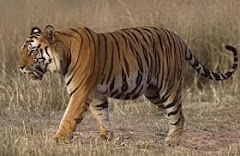.jpg)
Renungan Sang Harimau_Sabaha AnNamiru
.jpg)
Syaraba AnNamiru Ma_A
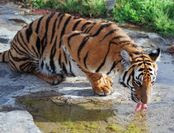.jpg)
AnNamiru_Riadhah
.jpg)
AnNamiru_Riadhah
.jpg)
AnNimru ma_A waladuha
Namir fil_Ghabi (sebut Robi...
Namir

AdDubbu_Beruang di hutan

Amu Syahidan Wa La Tuba lil_A'duwwi

AsSyahid

Namir

Tangkas
najwa dan irah

sungai

najwa

najwa

Kaabatul musyarrafah

unta

Jabal Rahmah

masjid nabawi

masjid quba

dr.eg

najwa dan hadhirah

along[macho]
![along[macho]](https://blogger.googleusercontent.com/img/b/R29vZ2xl/AVvXsEjuMi7D33CmR0_KXrCW2XigfLcUuQurcvtqOS139ncCwEzCyB-jUopk7QK7anADIenJEm2S0N6gAY1ubnACYXewgiAsI3rBjnLTawM39alLL-rEopOoVqn0w5WpLhPJH3hrXNtchEhgtyaI/s240/P7150023.JPG)
harissa dan hadhirah

adik beradik
Tongkat Ali

Tongkat Ali
herba kacip Fatimah
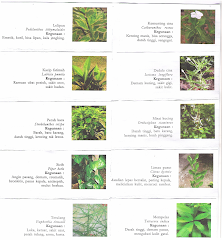
herba Kacip Fatimah
hempedu beruang
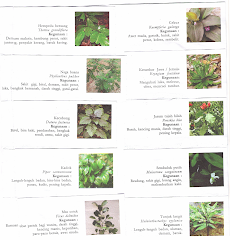
hempedu beruang
hempedu bumi

hempedu bumi
herba misai kucing

herba misai kucing
herba tongkat Ali
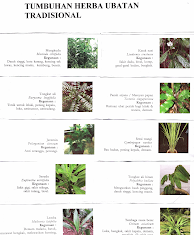.png)
Tongkat Ali
Ulama'

Ulama'
kapal terbang milik kerajaan negara ini yang dipakai pemimpin negara

kapal terbang
Adakah Insan ini Syahid

Syahid
Tok Ayah Haji Ismail

Saifuddin bersama Zakaria

Dinner....
Sukacita Kedatangan Tetamu
Pengikut
Kalimah Yang Baik

Ubi Jaga
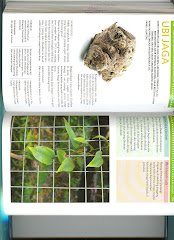
Ubi Jaga
Arkib Blog
Burung Lang Rajawali

Chinese Sparrowhawk
Kelicap Mayang Kelapa
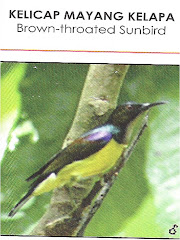
Brown-Throated Sunbird
Kopiah

Pokok Damar Minyak

Kacip Fatimah
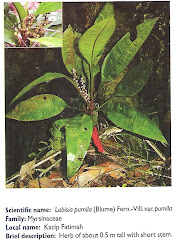
Mengkudu Akar
